Montreal is a city that refuses to be reduced to picture postcard clichés. Here, the gritty dep and styled food-market, the narrow ruelles and the wide boulevards, the laughter and longing, all exist side by side, unposed and unrehearsed. Montreal Unfiltered is an invitation to witness the city as it truly breathes: raw, restless, and radiant in its imperfection.
These photographs trace the pulse beneath the surface, capturing moments where the city’s true spirit flickers – in the crunch of a cyclist powering through snow at night, in the quiet dignity of a solitary reader, in the small sidewalk flower plots and community gardens. This is a city of contradictions: winter’s hush and the noisy summers, solitary figures and crowded streets, languages colliding and coexisting.
Let these images draw you into Montreal’s daily poetry – its grit and grace, its shadows and sudden bursts of color. Here, nothing is staged, nothing is concealed. This is Montreal, seen not through a filter, but through the honest lens of life itself.
Unfiltered Montreal
Homage to Margot Capelier, Casting Director for M Klein
One in a series of posts describing the making of the film M Klein, by Joseph Losey.
Previous related post: Introduction to the film and Shooting on location
Margot Capelier died in 2007 after a long career as a casting director in the French film industry. She was known and admired by many in French cinema for her dedication to actors. A deep humanity pervaded her professionalism. She loved actors and understood them, while maintaining an overview of the business, combining the professional and creative sides of film.
Despite her talents, she wasn’t rewarded with a glamorous lifestyle or widespread recognition. She is an example of someone who put her heart into her profession, helping many recognized individuals while herself remaining comparatively in the shadows.
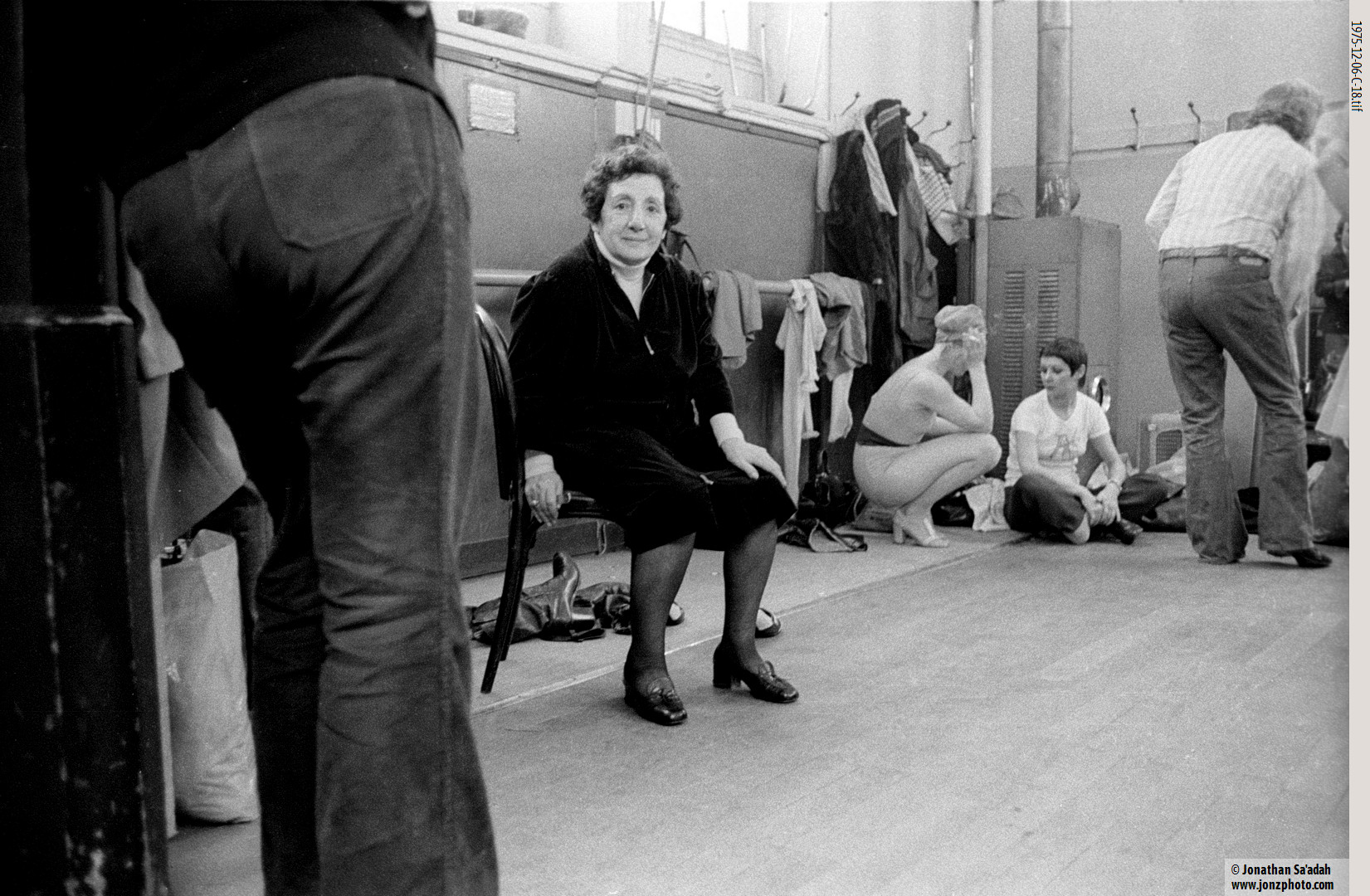
My friendship with Capelier was limited to the time M Klein was in production. I was never in her home and she never told me her story in great detail. On the other hand, she was one of two or three top people on the production side of the film who from the beginning accepted me as I was – a young still photographer brought into a tightly-knit world of successful professionals because of a connection with Losey – and she didn’t make a big deal out of it. Probably she was treating me the same way she would treat a young actor under her watch, and she has always kept a place in my memory as a person who stood out in the group surrounding Losey.
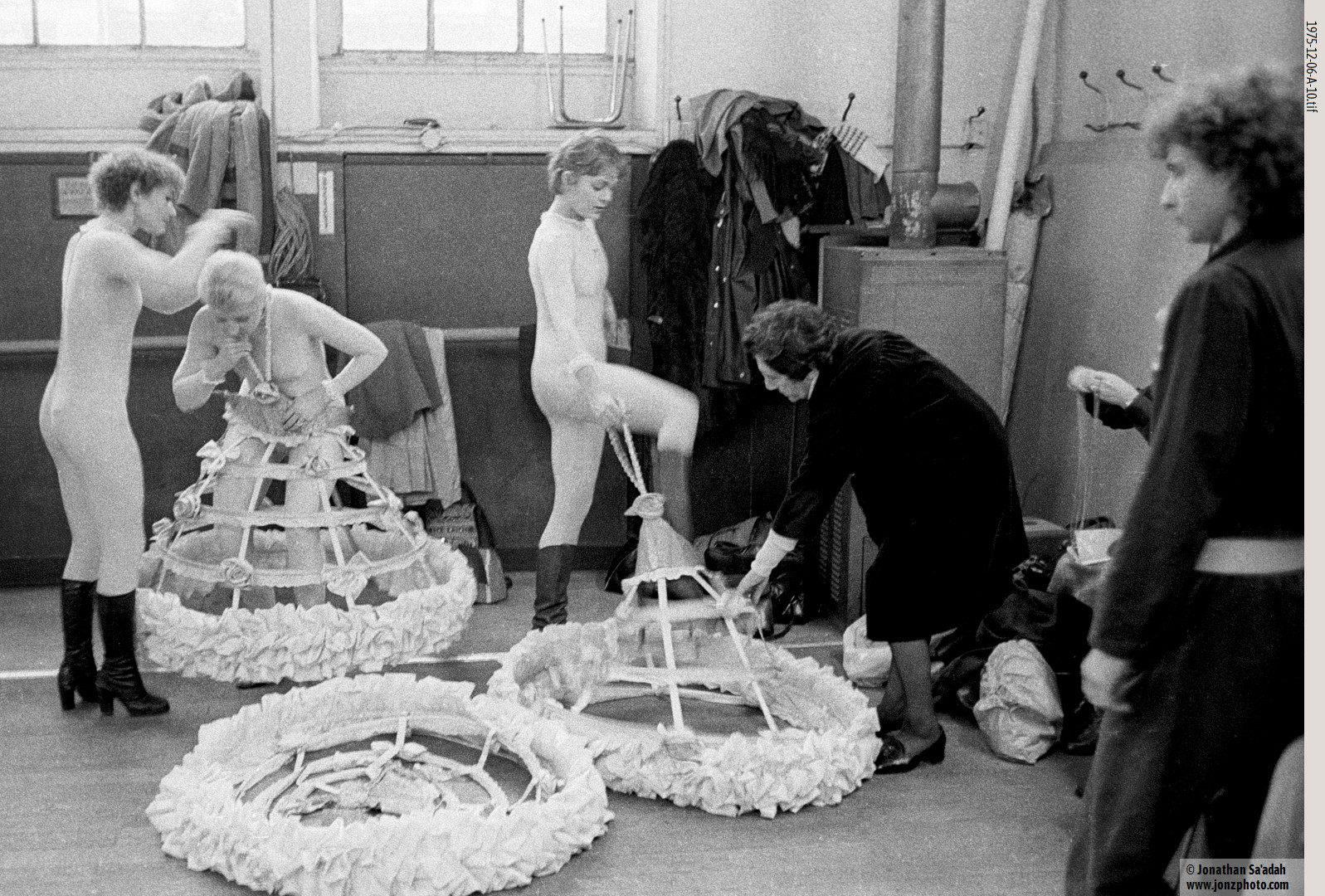
This account is drawn from what I knew of her personally, a few interviews, the radio interview linked below, and news articles that appeared during her life and at the time of her death (see the end of the post). I also acknowledge an excellent book by Corrine Bacharach (Reine du casting, published in 2022).
I’ve always wanted to contribute to her memory, first of all because she deserved it, but also because of the strength of her spirit. She battled adversity while seeing the world through a lens of compassion and understanding. To me, she was inspirational while being straightforward, a rare combination.
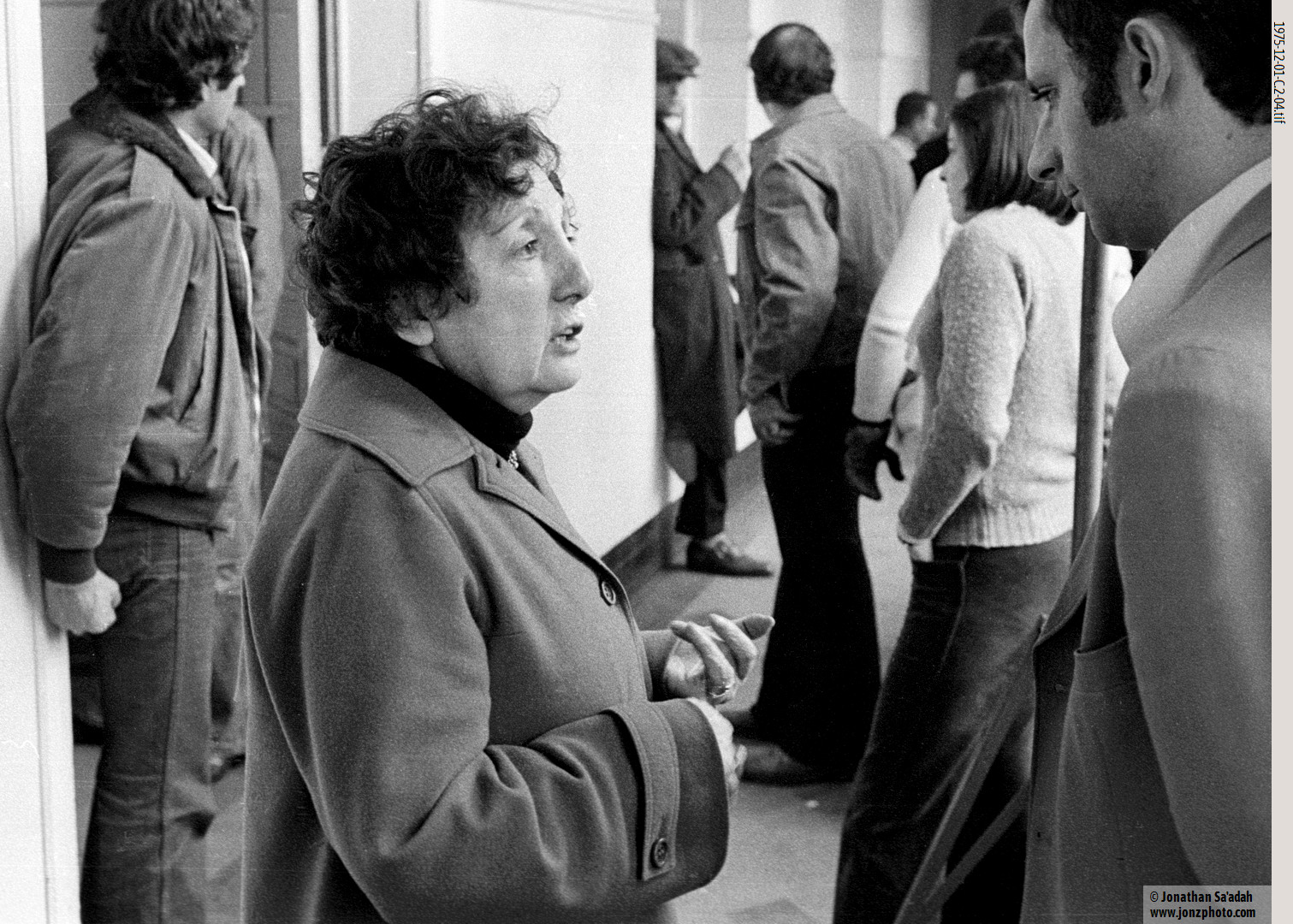
Capelier was born Margot Leibowitch in Paris in 1910, the middle child of Jewish immigrants originally from Odessa. She grew up in a small apartment on the north edge of the Marais, the Jewish ghetto in Paris, living with an older sister, a younger brother, parents, and her grandmother.
It wasn’t a happy childhood. “I think I’m afraid of myself, I’m afraid of others. I think it’s because I was unloved when I was a child. Well, I thought I was unloved, and then I was as soft as a rag…” This was her reflection in a 1990 interview broadcast by Radio France.
Her parents made her feel ugly and intellectually inferior to her siblings. In school, she faced ridicule from teachers for being Jewish. Instead of caving in, she learned early to fight back, becoming fiercely combative, a trait I occasionally observed.
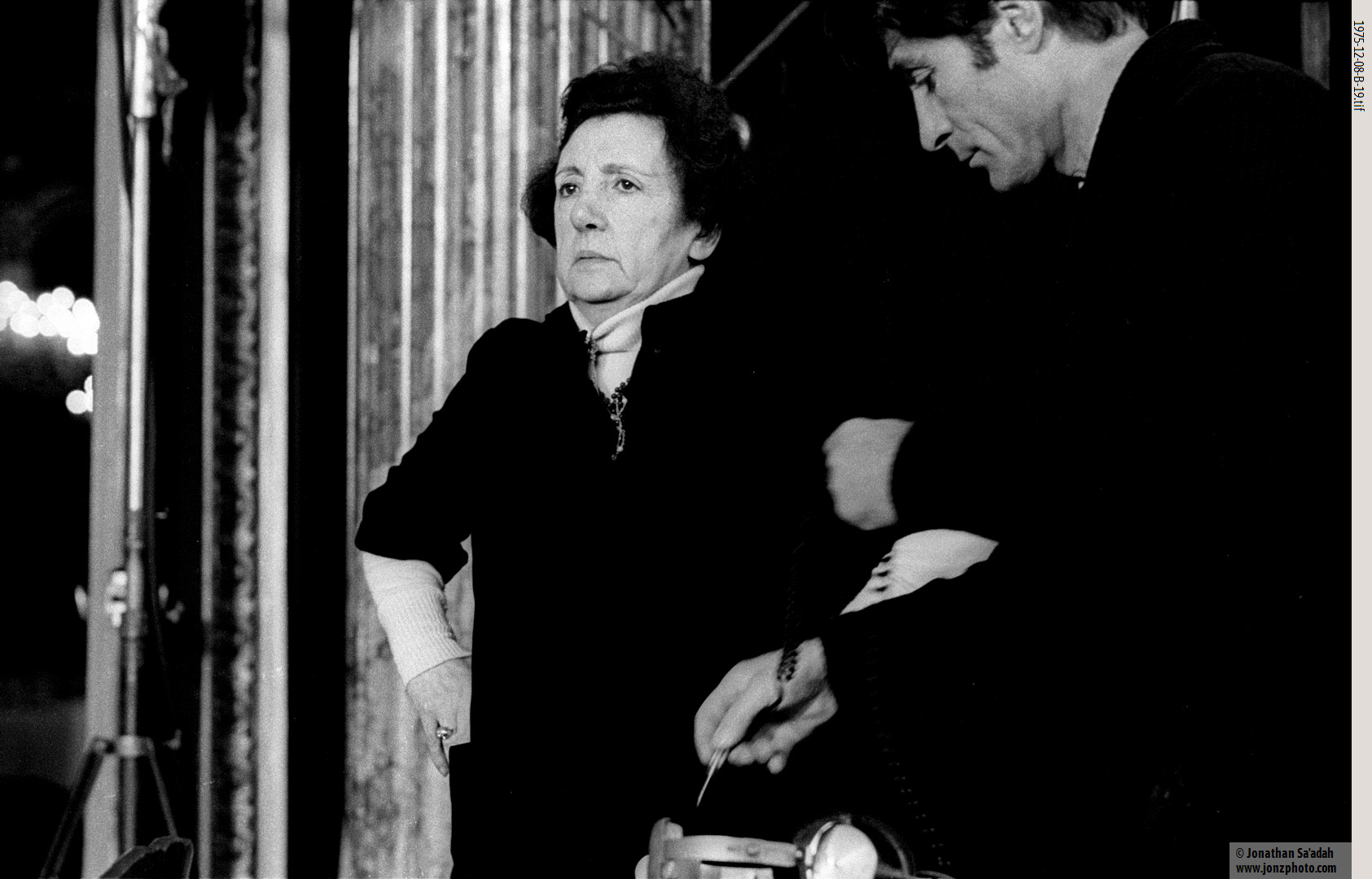

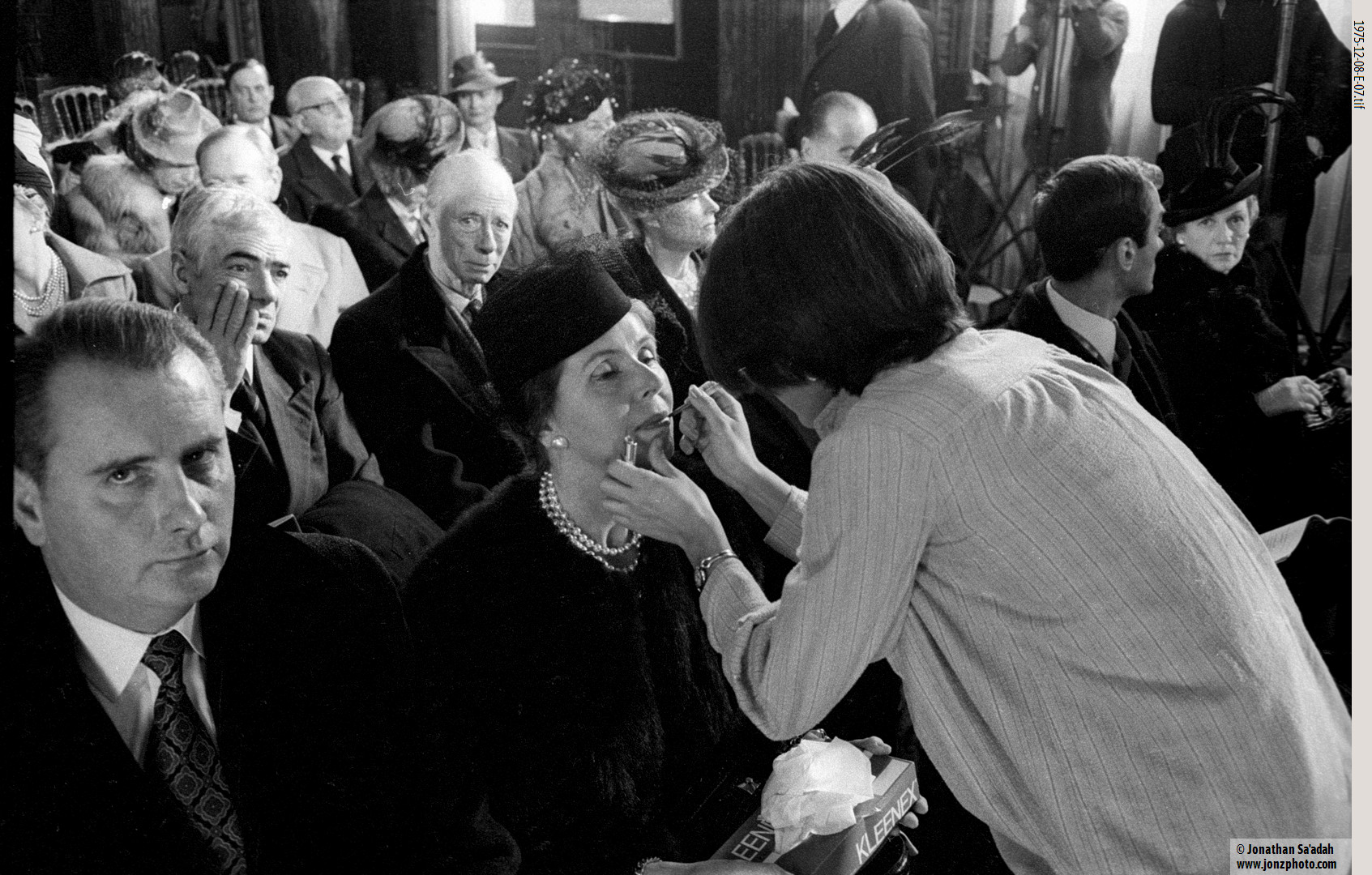
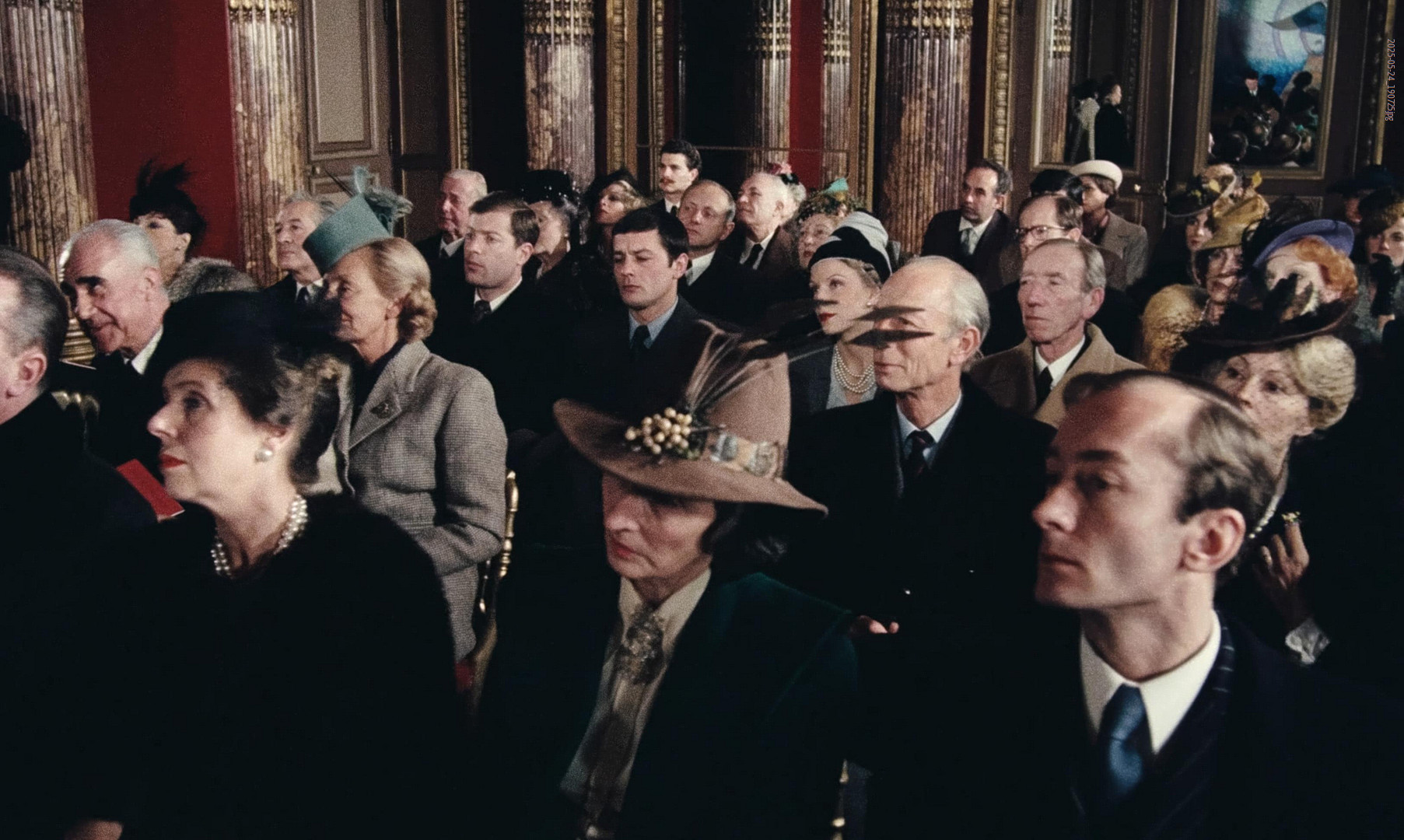
Margot Capelier brought to M Klein qualities based on fierce professional competence, strong ethical and political beliefs based on 1930s leftist ideology (shared with Losey), and deep roots in the French acting community gained through her personal life-long involvement. She could accurately gauge whether an actor would fit Losey’s personality and directing style, and that’s a good part of what made her so valuable to him.
Her familiarity with actors was inherited from her father, who loved theater, and took Margot to stage performances from an early age. He supported the family by selling hand-painted signs from a stall called “Michel” at the corner of rue Montmartre and Étienne-Marcel just north of Les Halles. Her mother was a reader, favoring Russian literature, while her grandmother could neither read nor write. The family were secular Jews trying to fit in to French society and culture while still maintaining an ethnic identity.

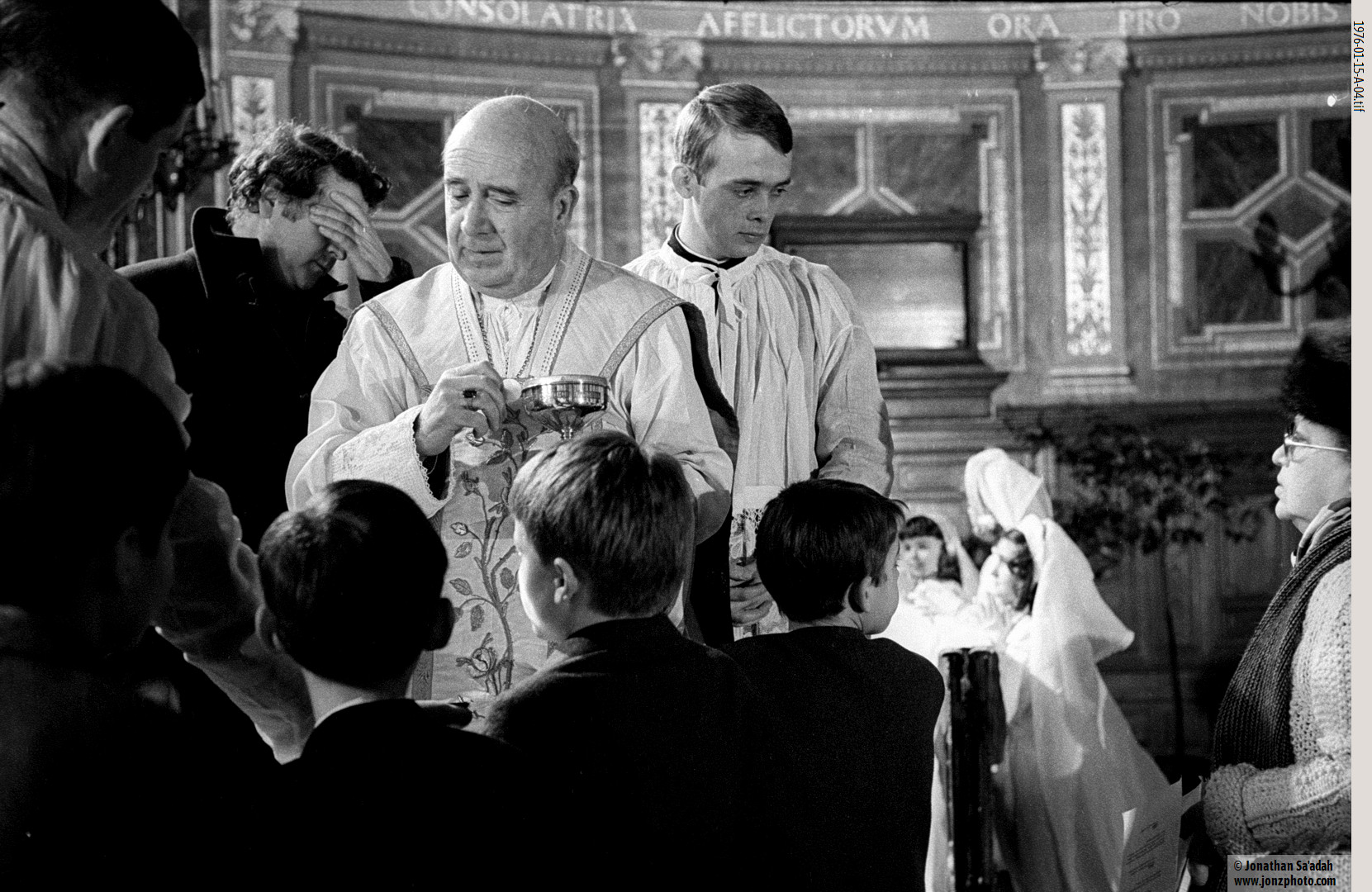
In 1926 her parents gave up on schooling their sixteen-year-old daughter, and sent her to spend nine months with a family in England. There she gained proficiency in English, which later would be of great value to her professionally.
On returning to France, she initially worked for her father, but couldn’t tolerate his angry and abusive personality. “He was very violent, very, very nervous…so it was a bit difficult.” At twenty-four she decided to search for a path that aligned more closely with who she was.
Through her brother, she was introduced to the radical-experimental theater (Le Groupe Octobre) of Jacques Prévert. Prévert’s popular productions played to working-class audiences, similar to the Agitprop style that Losey was exploring in New York during the same period. Both Prévert and Losey were influenced by Russian theater and communist ideals.

“I used to go to the theater, I’d cry and sob in the back row of the Comédie Française. I always told myself that when I had money, I’d go to the front row.” She did more than that; she made up her mind to join Prévert’s troupe despite having no acting experience. In April 1934, she was interviewed and accepted into Prévert’s talented group.
Initially, she was given small roles and gradually migrated to more production-oriented tasks.
In theater she knew that she had found the freedom that she sought. Working in the exciting and chaotic orbit of Prévert gave her experience and confidence to move forward. After her time with Prévert she played a few parts in films, and worked on many films as a production manager, but her true vocation was to, in the early 1960s, become France’s first Casting Director. It was a position that had originated in American film but migrated to Europe as more American directors came to France to work.
She married Auguste Capelier (1905-1977) during the Second World War while they were both hiding and in the Resistance in southern France, and together they had a child. Auguste Capelier was himself an accomplished French art director. Later in his career he worked for Losey’s French Art Director (Alexandre Trauner). Of course it was helpful to Losey that she had lived through the Nazi occupation and the Jewish roundups in Paris.
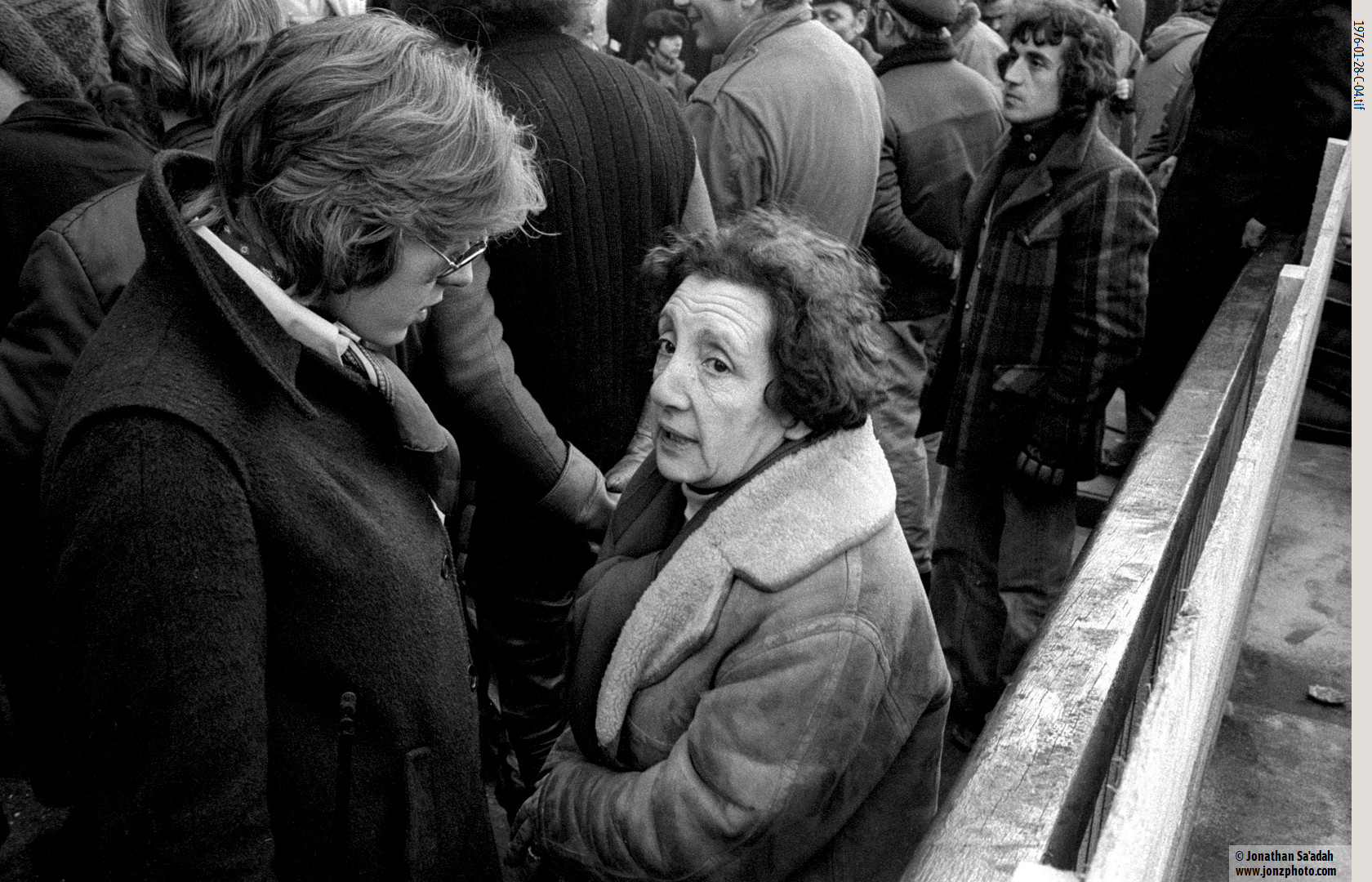
Capelier’s role in M Klein drew on her personal familiarity with French actors. She used that knowledge to suggest good candidates for each role. The candidate actor or actress would be interviewed jointly with Losey, and after that a decision would be made. In most cases the interviews were primarily in English.
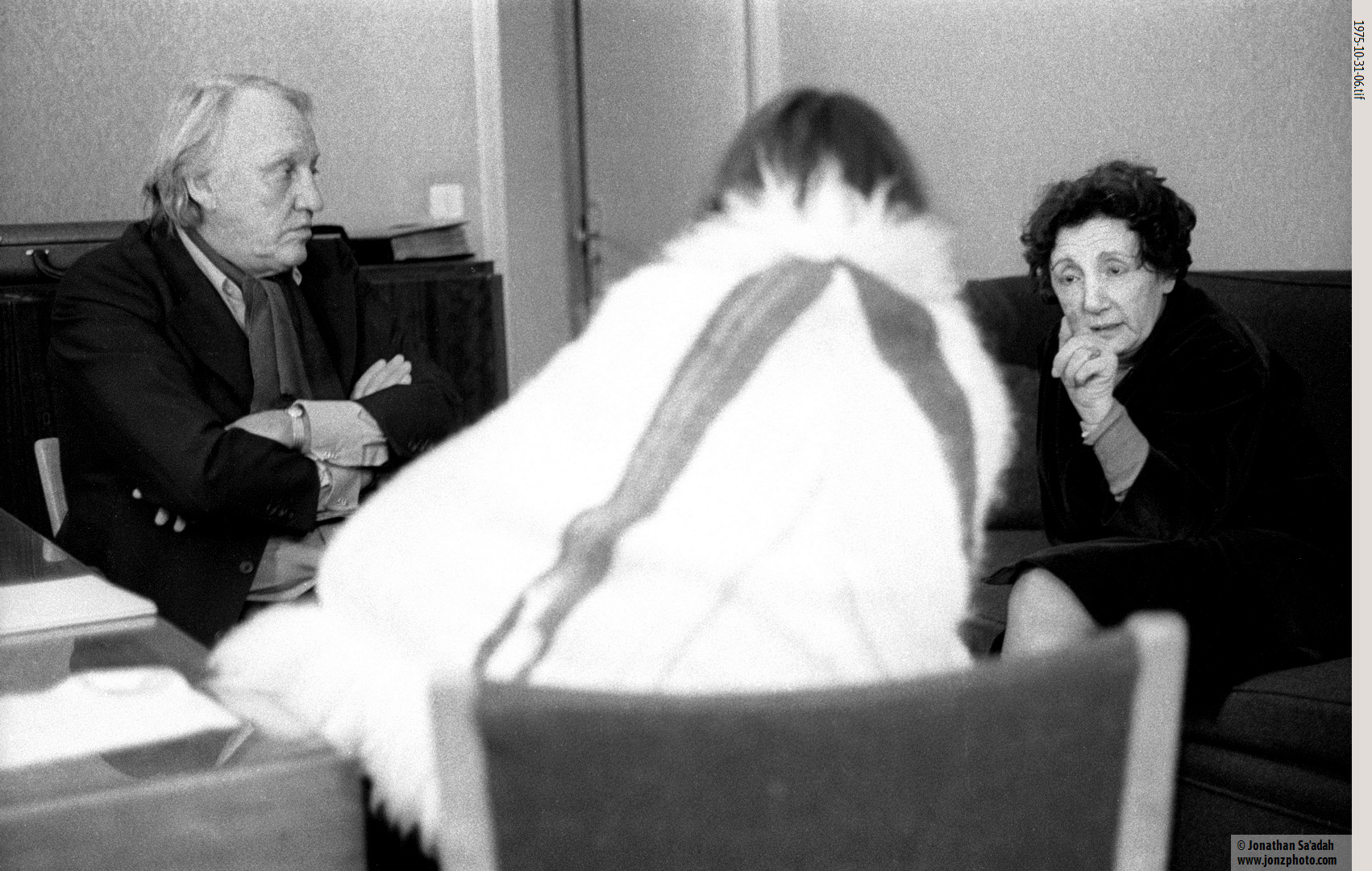
Losey’s questions to actors focused mostly on their interpretation of the screenplay and trying to get a feel for the person. What he was looking for were professionals who would hit the ground running, and be sure-footed, intelligent, and self-confident in playing their role. In presenting each actor Capelier was making a prediction of what their chemistry with Losey might be and whether it would work. She was often right in her assessments, which of course made the casting process much easier.
One of the secrets behind the strength of Capelier’s position in French cinema stemmed from her early passion for following actors through her love of their craft. She continued to live within the theaters of Paris, watching actors develop and encouraging their careers.
She encouraged many but also provided brutally honest feedback if she thought an actor was on the wrong path. Ironically, she brought together her father’s business acumen with a sensitivity to people she gained from her childhood traumas.
Notes:
Bacharach, Corinne. Margot Capelier, Reine Du Casting (1910-2007): De Jacques Prévert à Patrice Chéreau. Arles : Lyon: Actes Sud ; Institut Lumière, 2022.
Hamsy, Cécile. Mémoires Du Siècle – Margot Capelier, Directrice de Casting, 1990.
Berthomé, Jean-Pierre. “Margot Capelier 1911-2007,” Paris, France: Positif Editions, 2007.
Cast of M Klein
| Actor | Role |
|---|---|
| Alain Delon | Robert Klein |
| Jeanne Moreau | Florence |
| Francine Bergé | Nicole |
| Juliet Berto | Jeanine |
| Jean Bouise | Le vendeur |
| Suzanne Flon | La concierge |
| Massimo Girotti | Charles |
| Michael Lonsdale | Pierre |
| Michel Aumont | Le fonctionnaire de la préfecture |
| Roland Bertin | L'administrateur du journal |
| Jean Champion | Le gardien de la morgue |
| Etienne Chicot | Un policier |
| Magali Clément | Lola |
| Gérard Jugnot | Le photographe |
| Hermine Karagheuz | La jeune ouvrière |
| Elisabeth Kaza | Yvette (Château d'Esclimont) |
| Dany Kogan | Michelle |
| Carole Lange | La Caissiere (La Coupole) |
| Lucienne Le Marchand | Place Lucien Herr, Petite Place |
| Jacques Maury | Le professeur Montandon |
| Fred Personne | Le commissaire |
| Francine Racette | Françoise / Cathy |
| Rosine Rochette | La dame aux encheres (Hotel Intercontinental) |
| Isabelle Sadoyan | La femme à la consultation |
| Louis Seigner | Le père de Robert Klein |
| Maurice Vallier | L'homme (Cabinet du Prof Montandon) |
| Pierre Vernier | Un policier |
| François Viaur | Le concierge theatre |
| Brigitte Ariel | Usine Citroën |
| Marius Balbinot | Le Garcon (Bistrot telephone) |
| Maurice Baquet | Un musicien (Château d'Esclimont) |
| Philippe Brizard | Le facteur collabo (Appartement Robert Klein) |
| Jenny Clève | L'infirmière-secrétaire (Le professeur Montandon) |
| Raymond Danon | (uncredited) |
| Thierry de Brem | (uncredited) |
| Christian de Tillière | Le commissaire-priseur |
| Michel Delahaye | Accompagnateur Pere Klein |
| Bernard-Pierre Donnadieu | Extra |
| Pierre Frag | Le marchand de journaux |
| Mireille Franchino | La femme bus |
| David Gabison | Le groom |
| Maurice Jany | Le chauffeur à Ivry-Bataille |
| Joseph Losey | Un homme au Vel d'Hiv |
| Stephane Quatrehomme | Le fils de Pierre |
| Nathalie Rigaux | Une petite fille au Vel d'Hiv |
| Jean Topart | La voix du speaker (voice) |
| Danielle Verne | Une déportée |
Exploring location shooting in Joseph Losey’s M Klein
Previous post about Joseph Losey and the film M Klein: A behind-the-scenes introduction to M Klein
The use of Paris locations in the shooting of Joseph Losey’s M Klein
Location shooting is always a hassle. Some locations, like the abandoned factory or iconic city park, are well known and repeatedly used by films. But often film locations hide under the surface of everyday life, requiring intimate knowledge of the city to pull them out. Joseph Losey never lived in Paris but was determined to use locations in the filming of M Klein, eschewing the safe confines of the film studio for the realism of the buildings and streets of Paris. Finding those locations rested on the shoulders of the Art Director, Alexandre Trauner. Trauner presented Losey with potential locations and if Losey approved the responsibility of permitting and other business arrangements were handled by the production company.
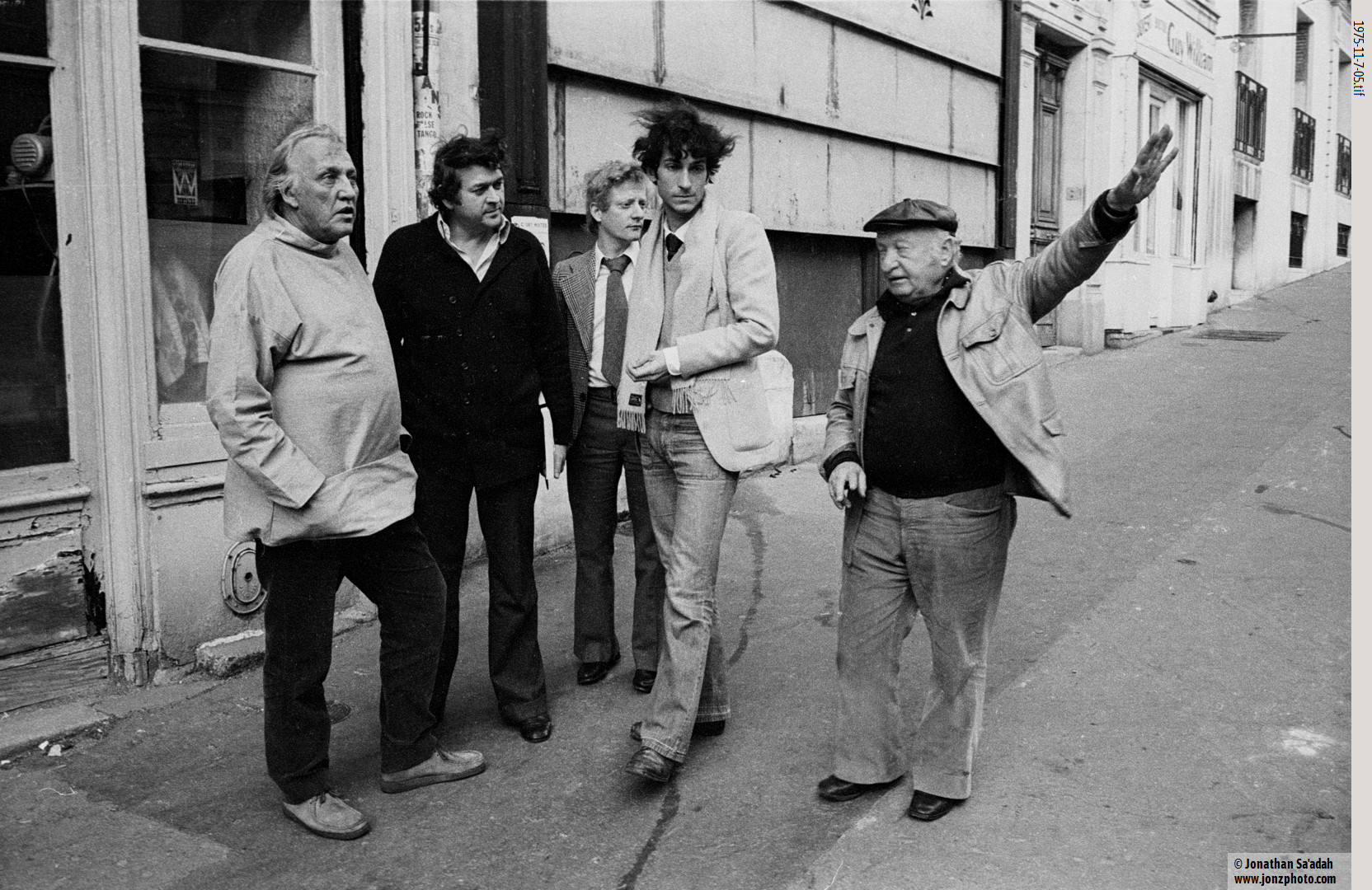
Though he experienced push-back from the production company related to the increased cost and logistical complexity, Losey prevailed, using thirty two locations for the shooting in M Klein. These locations admittedly increased production headaches but added greater realism to the film. Location shooting also kept everyone sharp since each day would throw unpredictable challenges at the crew, most of whom were experienced professionals who liked rising to the challenge.

The second Klein’s apartment was a good example. The location was at 42 rue des Panoyaux and has long since been replaced by apartment buildings. The exterior courtyard was used for the scene (“Concierge loge”) where the French Klein is looking for his double and he questions the concierge. The same location is used immediately afterwards in the film for the interior shots where the concierge allows the French Klein to inspect the Jewish Klein’s abandoned apartment. There was something sublimely ironic about famous movie stars and a well-known director having to work in filthy spaces only the poorest people would know.

As an illustration of location challenges, even arranging for the use of this building was complicated. The production company had to negotiate a shooting permit from the city government and a condition attached to the permit required extensive shoring of the building before the film crew would be let in, so there were significant costs in engineering and construction. Once everyone had jumped through the hoops, the actual filming required a complicated location setup. There was staff outside on the street managing the crowd of people who gathered hoping to catch a glimpse of Alain Delon, generator trucks with long cables supplying power, and intricate lighting setups because of cramped quarters. The camera crew didn’t have room to assemble their gear so that had to be done down the street at another address.
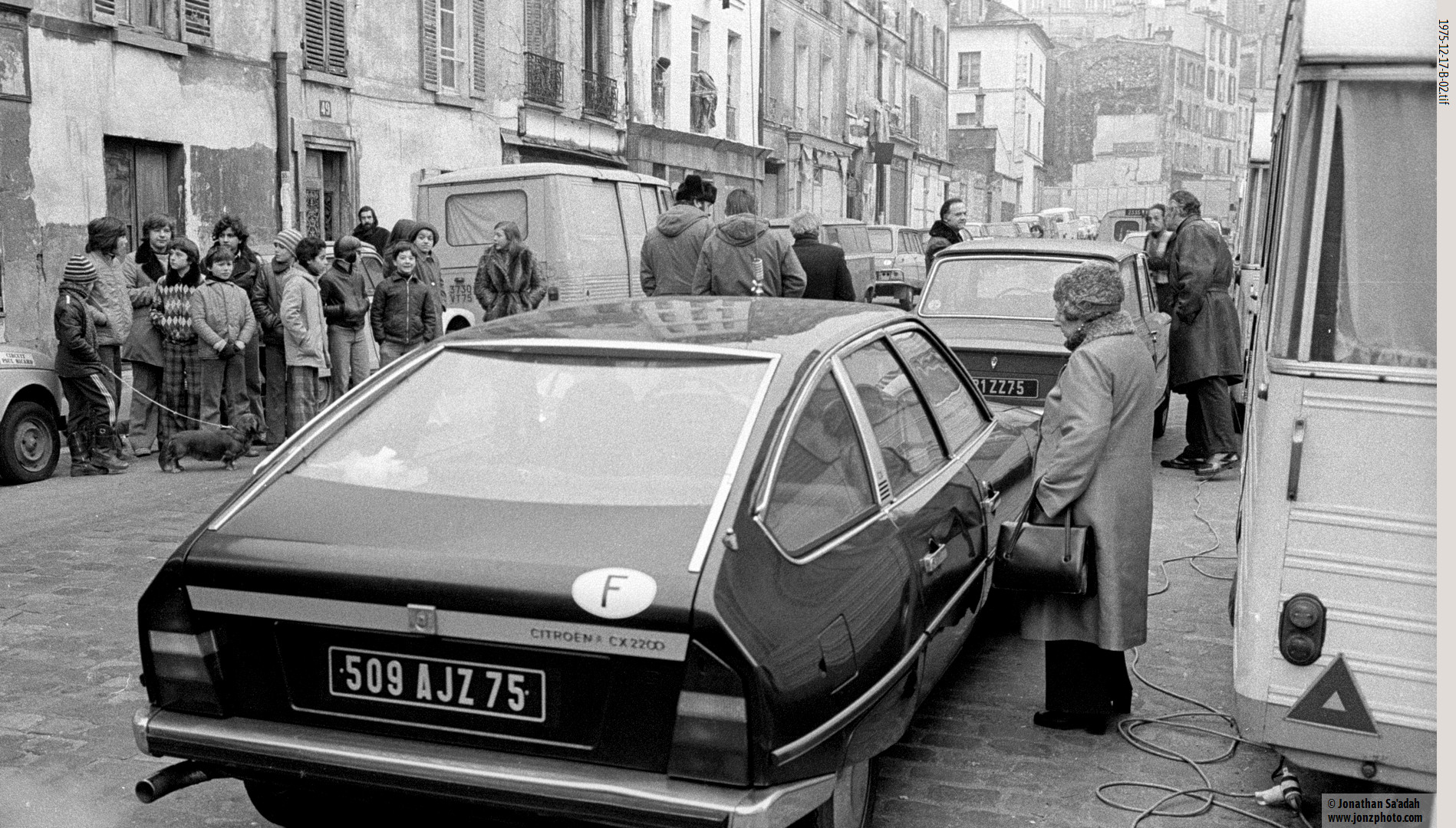
Then the snow started. It hardly ever snows in Paris, but nature chose that morning. There was nothing to do other than protect the equipment and reschedule.
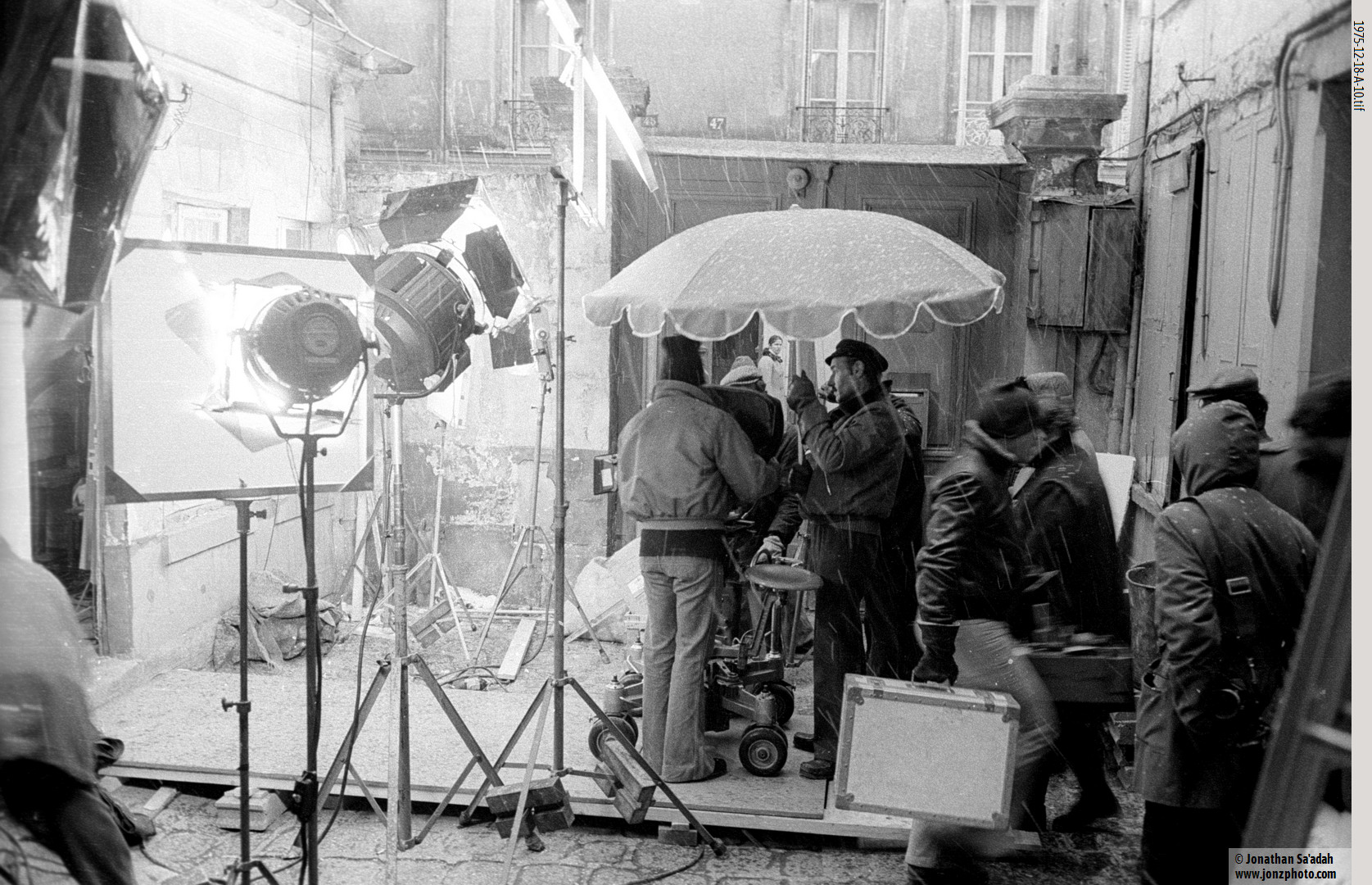
Another location which, atypically, wasn’t in Paris but didn’t work out smoothly either was in Strasbourg and was used for the shots along the canal. On arrival in Strasbourg Losey had a serious asthma attack and was not well, adding to the stress.
The location along the canal had been scouted in advance, but someone overlooked that tracking shots were called for. The underfoot surfaces were rough – brick cobblestones and a wooden walkway – making any movement of the camera a challenge, much less the fluid moves Losey expected.
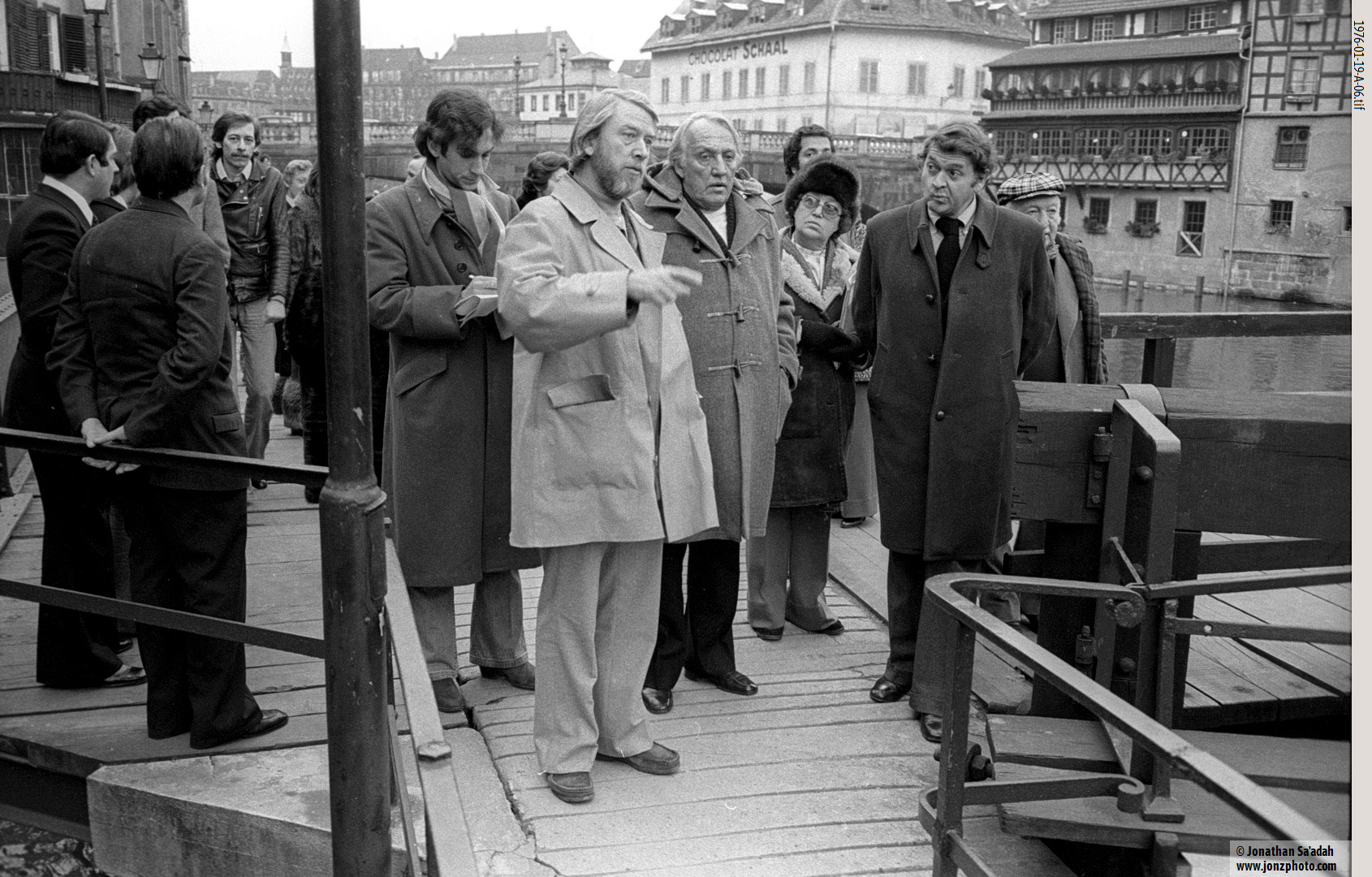
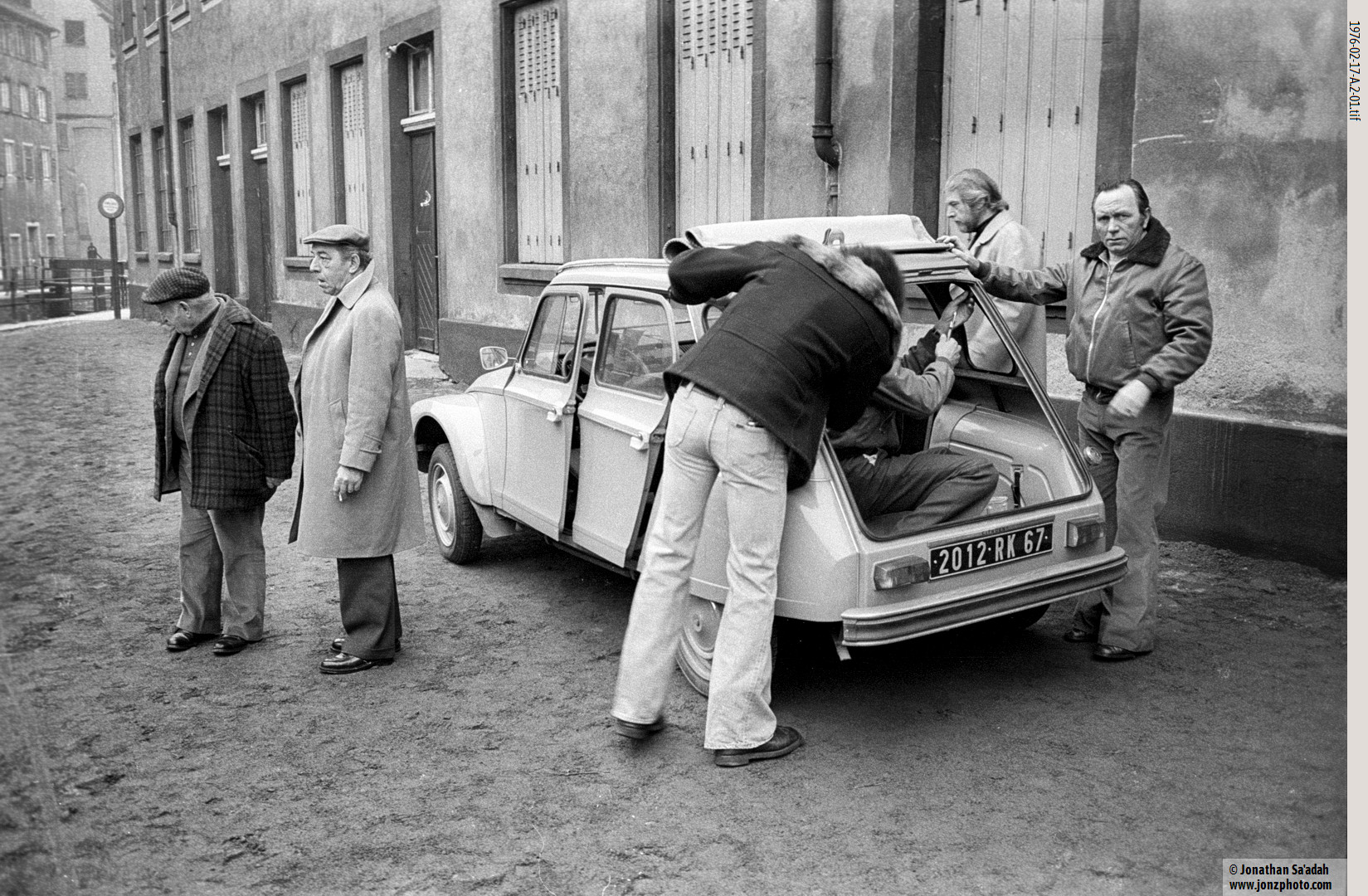
This was a serious problem because the clock was ticking – it had already cost a lot to move the whole production to Strasbourg and the shots needed to go off according the schedule. Everyone was under the gun. The machinists rigged up a hastily modified soft-tired Citroën Deux Chevaux with the Panavision camera on a tripod, tightly lashed to its floor. This whole rig was pushed by human-power but only after the bricks were wiped with sand to smooth them out a bit (which introduced its own problems).
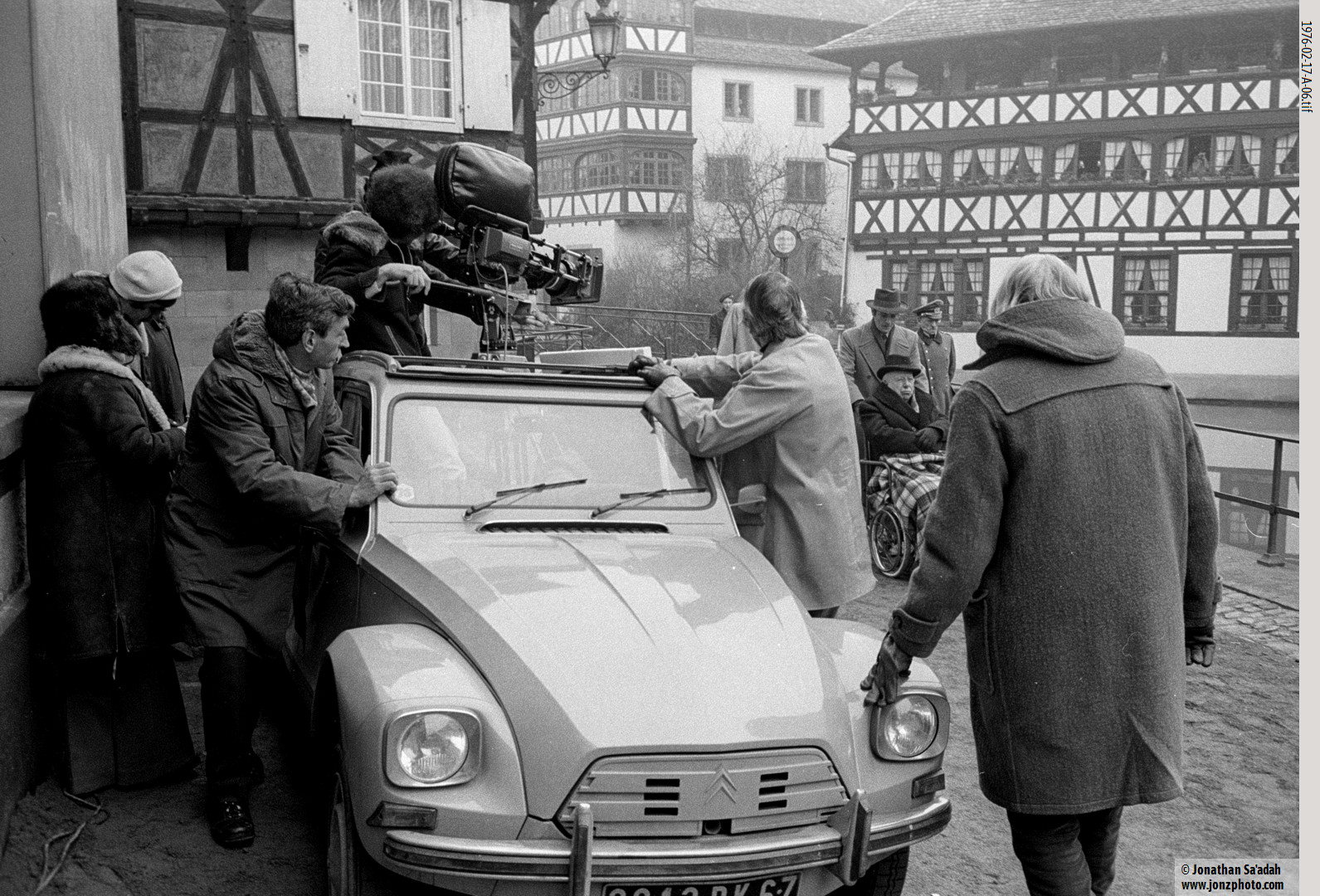
It was also problematic that Klein’s father was in a wheelchair and at the beginning of the shot his caretaker had to push him while he spoke, with Robert Klein taking over partway through. In the resulting shot it’s obvious that sand has been spread around (it looks out of place) and there are a lot of wobbles in the movement of the wheelchair (and the car-mounted camera). Luckily, the actor playing the caretaker and then Delon, after he took over, were strong enough to get a marginally acceptable result.
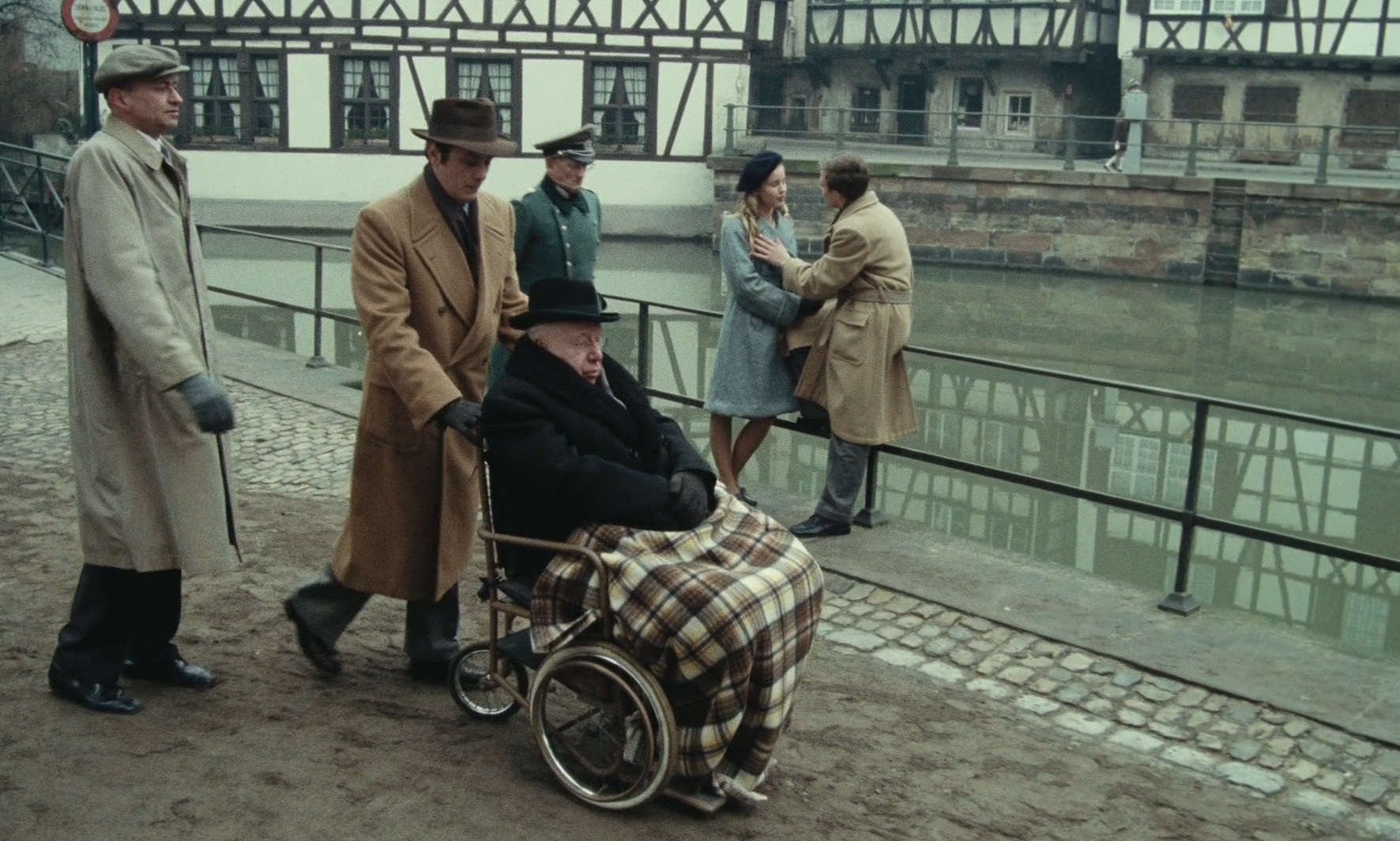
In the next shot (on the problematic wooden walkway) the Deux Chevaux was used for the establishing shot with Klein’s body screening view of the sand that had been spread to even the walkway. The next shot, a side closeup, is a long tracking (rail) shot. Again, Delon had the challenge of pushing his father on slats that had been leveled as much as possible with sand, trying to power through and disguise the problem. A true professional, Delon was strong enough to concentrate on his role without appearing the least bit rattled.

Each location had its problems, some less than others but some more too. The complicated and costly stadium scene at the end of the film was so difficult that the filming broke down towards the end of the day, and the editor had to work to salvage what he could. But overall the use of locations did a lot to make M Klein echo the time and events it was portraying, and to enhance and reinforce the reputation of the film.
Other posts in this series about M Klein: Joseph Losey’s film M Klein: A behind-the-scenes look
Locations arranged by date
| Name of scene | Location | Address | Filming date |
|---|---|---|---|
| Titles | |||
| Cabinet du professeur Montandon et Salle d'attente & couloirs | Hôpital Cousin de Mericourt & Besson | 15, av Cousin de Méricourt 242230 Cachan | 1-Dec-75 |
| Chambre/Salle de bains | Studios de Boulogne | 2, rue de Silly, Boulogne (Plateau A) | 3-Dec-75 |
| Appartement Robert Klein | Studios de Boulogne | 2, rue de Silly, Boulogne (Plateau A) | 4-Dec-75 |
| Appartement Robert Klein - Chambre | Studios de Boulogne | 2, rue de Silly, Boulogne (Plateau A) | 5-Dec-75 |
| Appartement Robert Klein - Rez-de-chaussee | Studios de Boulogne | 2, rue de Silly, Boulogne (Plateau A) | 5-Dec-75 |
| Repetition du spectacle Frantz Salieri | Studio Constant | 13, boulevard de Clichy | 6-Dec-75 |
| Repetition du spectacle Frantz Salieri | Studio Constant | 13, boulevard de Clichy | 8-Dec-75 |
| Salle des ventes | Hotel Intercontinental | 3, rue de Castilglione | 8-Dec-75 |
| Boite de nuite | Cabaret: "La Nouvelle Eve" | 25, rue Fontaine | 9-Dec-75 |
| Boite de nuite | Cabaret: "La Nouvelle Eve" | 25, rue Fontaine | 10-Dec-75 |
| Coulisses theatre | Coulisses Theatre | 25, rue Fontaine | 11-Dec-75 |
| Administration du journal | Imprimerie C.I.B. | 7, rue Darboy 75001 | 12-Dec-75 |
| Rue de Paris, vers 2éme Klein | Rue de Paris | Rue Gasnier Guy | 12-Dec-75 |
| Rue de Paris minutage | Rue de Paris | Rue Lepic (à l'angle de la rue de Lorient) | 15-Dec-75 |
| Bistrot Telephone | Café "Au Réveil Matin" | 23 rue Chanzy | 15-Dec-75 |
| Appartement Robert Klein | Studios de Boulogne | 2, rue de Silly, Boulogne (Plateau A) | 16-Dec-75 |
| Photographe | Studios de Boulogne | 2, rue de Silly, Boulogne (Plateau A) | 16-Dec-75 |
| Façade maison 2ème Klein | Façade Maison 2ème Klein | 42 rue des Panoyaux | 17-Dec-75 |
| Loge Concierge | Loge Concierge | 42 rue des Panoyaux | 17-Dec-75 |
| Maison 2ème Klein | Maison 2ème Klein | 42 rue des Panoyaux | 18-Dec-75 |
| Maison 2ème Klein | Maison 2ème Klein | 42 rue des Panoyaux | 18-Dec-75 |
| Rue maison 2ème Klein | Maison 2ème Klein | 42 rue des Panoyaux | 19-Dec-75 |
| Cour & loge maison 2ème Klein | Cour & loge maison 2ème Klein | 42 rue des Panoyaux | 19-Dec-75 |
| Appartement 2ème Robert Klein | Appartement 2ème Klein | 42 rue des Panoyaux | 19-Dec-75 |
| Lycée Henri IV | Lycée Henri IV | 23 rue Clovis | 22-Dec-75 |
| Rue immeuble 2ème Klein | Rue immeuble 2ème Klein | 42, rue des Panoyaux | 22-Dec-75 |
| Cour maison Robert Klein | Rue du Bac | 110 rue du Bac | 23-Dec-75 |
| Cour maison Robert Klein | Rue du Bac | 110 rue du Bac | 23-Dec-75 |
| Cour maison Robert Klein | Rue du Bac | 110 rue du Bac | 23-Dec-75 |
| Cour maison Robert Klein | Rue du Bac | 110 rue du Bac | 23-Dec-75 |
| Cour maison Robert Klein | Rue du Bac | 110 rue du Bac | 24-Dec-75 |
| Cour maison Robert Klein | Rue du Bac | 110 rue du Bac | 24-Dec-75 |
| Appartement Robert Klein | Studios de Boulogne | 2, rue de Silly, Boulogne (Plateau A) | 29-Dec-75 |
| Appartement Robert Klein | Studios de Boulogne | 2, rue de Silly, Boulogne (Plateau A) | 30-Dec-75 |
| Appartement Robert Klein | Studios de Boulogne | 2, rue de Silly, Boulogne (Plateau A) | 30-Dec-75 |
| Appartement Robert Klein | Studios de Boulogne | 2, rue de Silly, Boulogne (Plateau A) | 31-Dec-75 |
| Appartement Robert Klein | Studios de Boulogne | 2, rue de Silly, Boulogne (Plateau A) | 31-Dec-75 |
| Appartement Robert Klein | Studios de Boulogne | 2, rue de Silly, Boulogne (Plateau A) | 5-Jan-76 |
| Appartement Robert Klein | Studios de Boulogne | 2, rue de Silly, Boulogne (Plateau A) | 5-Jan-76 |
| Appartement Robert Klein | Studios de Boulogne | 2, rue de Silly, Boulogne (Plateau A) | 5-Jan-76 |
| Appartement Robert Klein | Studios de Boulogne | 2, rue de Silly, Boulogne (Plateau A) | 5-Jan-76 |
| Appartement Robert Klein | Studios de Boulogne | 2, rue de Silly, Boulogne (Plateau A) | 6-Jan-76 |
| Prefecture, salle de reunion | Studios de Boulogne | 2, rue de Silly, Boulogne (Plateau A) | 6-Jan-76 |
| Bureau Fonctionnaire | Studios de Boulogne | 2, rue de Silly, Boulogne (Plateau A) | 6-Jan-76 |
| Répétition séquence Usine stage C | Studios de Boulogne | 2, rue de Silly, Boulogne (Plateau A) | 7-Jan-76 |
| Boulevard Minutage (Exterieur) | Pont St-Louis | Pont St-Louis, angle quai d'Orlean | 7-Jan-76 |
| Prefecture-Tri Stage A | Studios de Boulogne | 2, rue de Silly, Boulogne (Plateau A) | 7-Jan-76 |
| Usine | Usine Citroën | Angle Quai André Citroën et rue Leblanc | 8-Jan-76 |
| Depot | Caserne des pompiers | 1, Place Jules Renard | 9-Jan-76 |
| Metro | Metro | 1, Place Balard | 9-Jan-76 |
| La Coupole | La Coupole | 102, bld du Montparnasse | 12-Jan-76 |
| Appartement Robert Klein | Studios de Boulogne | 2, rue de Silly, Boulogne (Plateau A) | 13-Jan-76 |
| Morgue Stage C | Studios de Boulogne | 2, rue de Silly, Boulogne | 13-Jan-76 |
| Retake "Tapisserie" | Studios de Boulogne | 2, rue de Silly, Boulogne (Plateau A) | 13-Jan-76 |
| Eglise | Eglise Saint-Eustache | Angle rue Montmartre et rue Coquillère | 14-Jan-75 |
| Journee de voyage Paris/Strasboug | 15-Jan-76 | ||
| Jardin Public | Strasbourg | Le Bord de L'Ill (Place Benjamin Zix) | 16-Jan-76 |
| Gare Ivry la Bataille | Gare de Mortcerf 77220 | 19-Jan-75 | |
| Quai gare | Gare D'Austerlitz | Quai gare | 20-Jan-76 |
| Train en marche | Gare D'Austerlitz | Voie 21 Gare D'Austerlitz | 21-Jan-76 |
| No call sheet, shooting cancelled | 22-Jan-76 | ||
| Police car depot | Grand Palais | Grand Palais | 22-Jan-76 |
| Maison Pierre | Rue St-Dominique | c/o M Netter, 11 bis, rue St-Dominique | 23-Jan-76 |
| Kiosque | Rue du Bac | 110 rue du Bac | 26-Jan-76 |
| Morgue Stage A | Studios de Boulogne | 2, rue de Silly, Boulogne | 26-Jan-76 |
| Scouting Château d'Esclimont | Château | 26-Jan-76 | |
| Stade | "La Cipale" (Vélodrome Municipal de Vincennes) | Avenue de Gravelle Paris 12 | 28-Jan-76 |
| Stade | "La Cipale" (Vélodrome Municipal de Vincennes) | Avenue de Gravelle Paris 12 | 29-Jan-76 |
| Minutage | Place Lucien Herr 5ème | 30-Jan-76 | |
| Int. autobus en marche | Autobus | 68, rue Coriolis (12ème) | 30-Jan-76 |
| Eventuellement, décor: Retakes tapisserie | Studios de Boulogne | 2, rue de Silly, Boulogne (Plateau A) | 30-Jan-76 |
| Wagons fin de film | Gabriel Lamé | 1 rue Gabriel Lamé | 31-Jan-76 |
Rebels in class: The birth of Pilobolus Dance Theater
There aren’t many arts organizations that survive fifty years, but the energetic dance group Pilobolus has surpassed the half-century mark and is still going strong. That’s not to say that getting to fifty has been easy. Part of its secret in attaining longevity has been that since birth it’s had an audacity and questioning of conventions that’s part of its DNA. The group has not been afraid of going against the rules and even reinventing itself when needed. When under stress, much like the fungus from which it took its name, Pilobolus fires out high speed spores for propagation and that’s proven to be an effective strategy for survival.

The original hot spark that ignited Pilobolus was struck in Professor Alison Chase’s dance class at Dartmouth College. It was 1971 – Vietnam years – and the Dartmouth administration, along with parts of the student body, were still stubbornly holding on to being an all-male college. Regardless, women were beginning to be a presence on campus. In reality, a majority of the students were rebellious and seeking teachers who not only opposed the war but embraced alternative approaches. Alison Chase was young – closer in age to her students than to other professors in her department – and as a teacher she had a collective and improvisational style of teaching choreography that caught the times. Just that there was a dance class on campus was a big step for the college. When most professors at Dartmouth were stodgy academics often tacitly supporting the status quo, Chase was a young attractive female teaching testosterone saturated students in leotards – a sure recipe to create sparks if not smoke and fire. She connected them with the world of dance, and in doing so she altered their lives and they, in turn, hers.
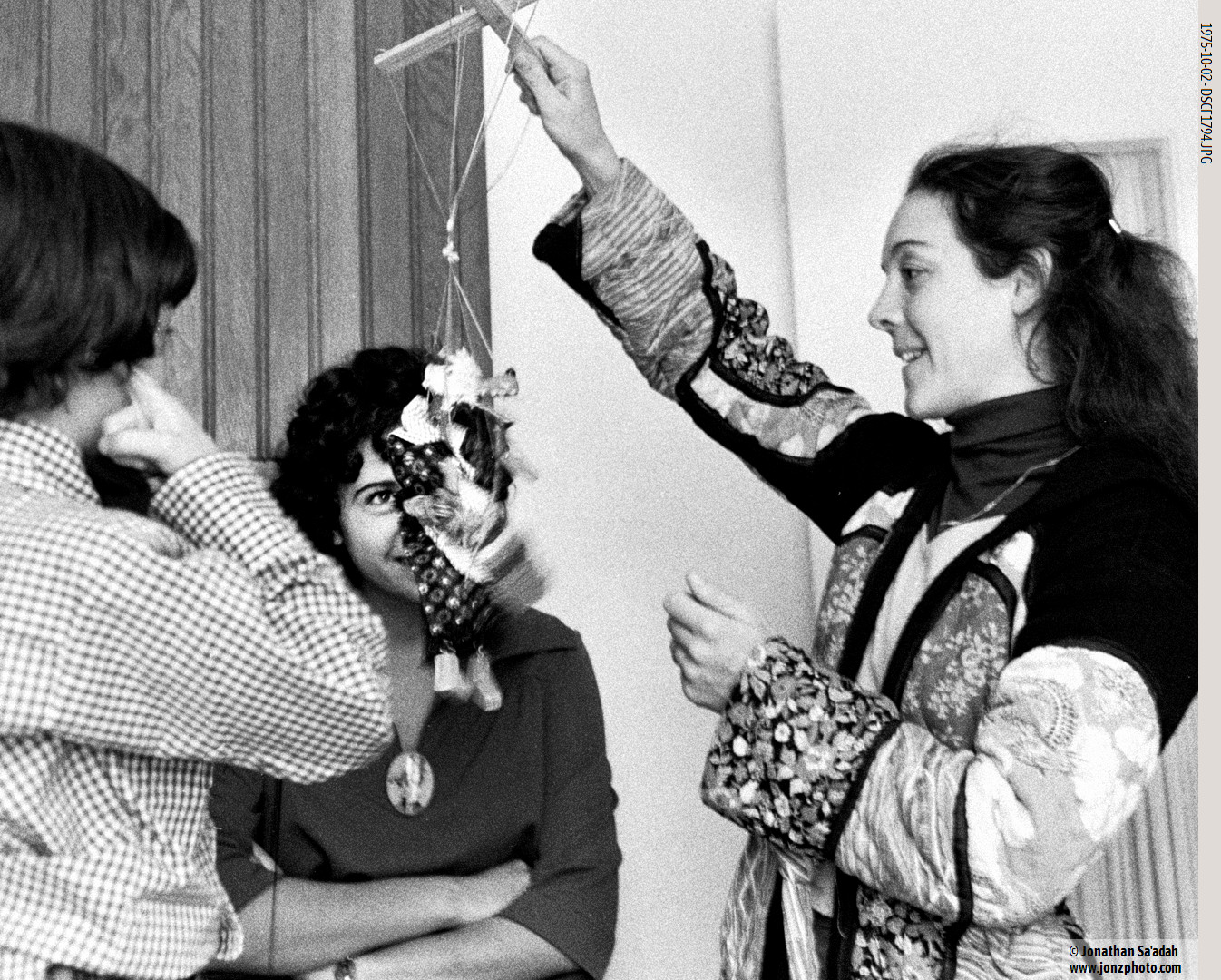
I too was a Dartmouth student during those years, and the original dancers were friends or schoolmates. Being aware of the campus buzz surrounding their work, I photographed one of their first public performances on a small experimental stage in the college’s art center.
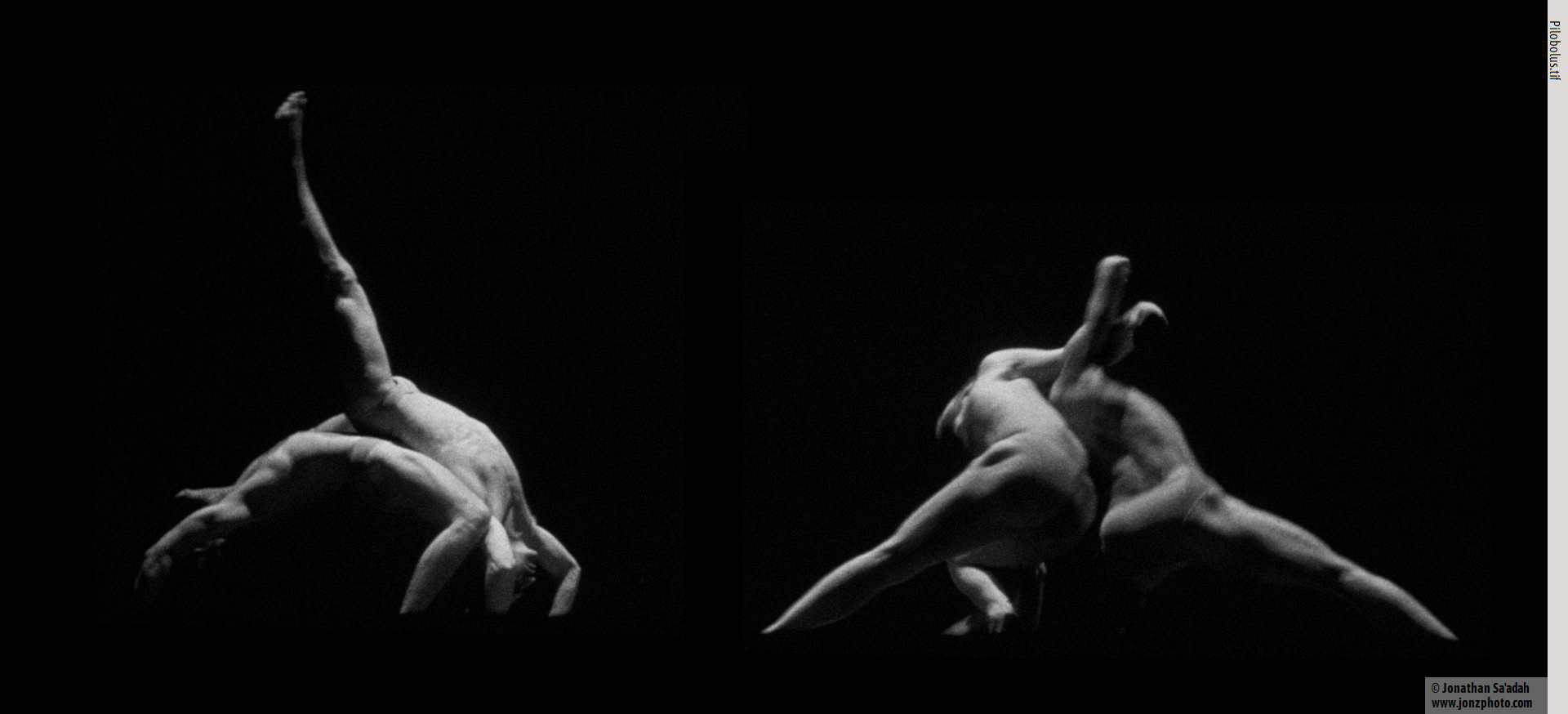
Some months later, after graduation and during the winter of 1972-1973, I caravaned with them through northern New England photographing some of their early public performances. These performances were on small stages in college towns. The truth was that having a stage on which to rehearse and communally choreograph was as valuable to them as the small fee they were being paid. This was truly the birth period of the dance group, as it built up a repertoire and expanded from the original male quartet to six, adding two women. One, not completely surprisingly, was their former teacher and the other, Martha Clarke.
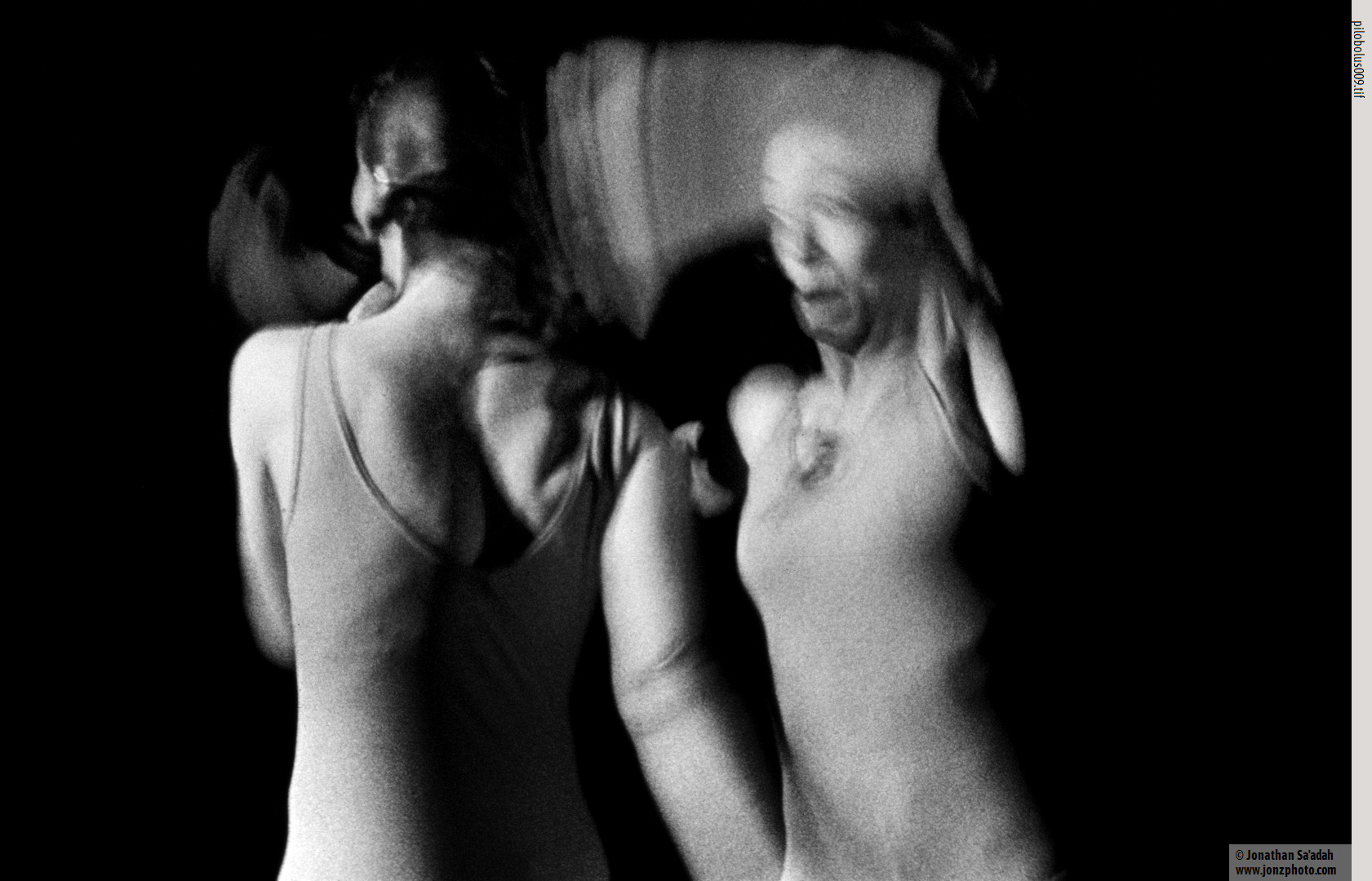
In looking back at these photographs I think how different they would have been if I were shooting them today. They were shot on high speed black-and-white negative film (Tri-X) that was then processed to reverse the image, yielding a positive transparency. The reversal was to get around not having a darkroom, since I was living in the woods with no electricity and only rudimentary plumbing. The grit (organic material) in the water shows up as a lot of “dust” in the photos. More light was required for the exposures than what we need now, so even though I was using a Leica camera with fast lenses (and a silent shutter), taking photos that were representative of the dances was a challenge, especially since they were shot during actual performances and I was using dim stage lighting.
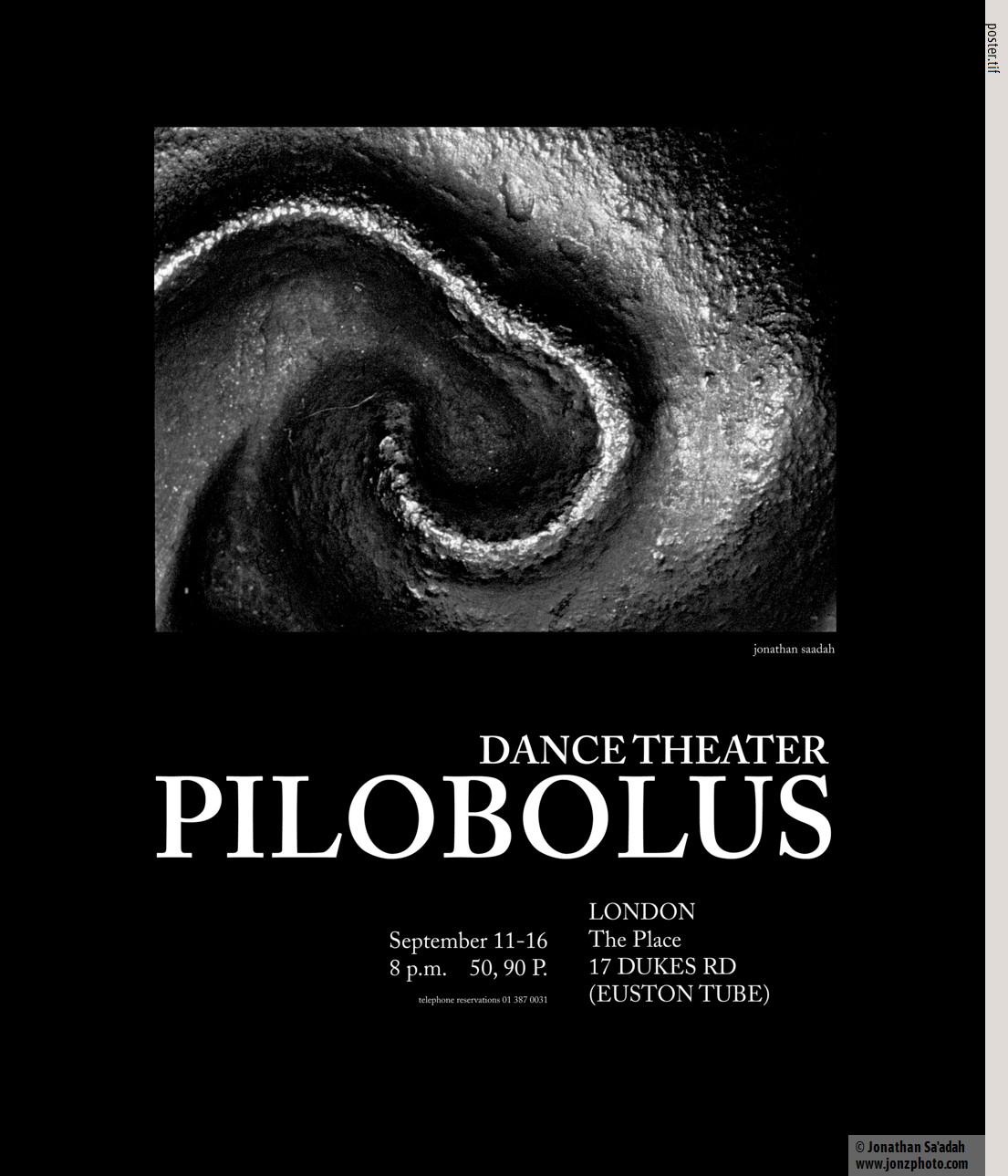
After these pictures were taken Pilobolus traveled to Edinburgh where it was the hit of the Fringe Festival, being awarded the “Fringe First Prize”, and continued on to shows in London. At Moses Pendleton’s suggestion, a photograph of mine (a detail of a Glenwood stove) was used for their poster. Their receptions in Edinburgh and later London were big steps to their widening success. Soon after they left their base in Vermont and moved to southern Connecticut, which is still their home. In late summer of 1975 our paths crossed again when they were in Paris performing at Espace Pierre-Cardin. It was fun to see them being courted by the European arts aristocracy, as they continued gathering steam.
A selection of these pictures appeared in the book Pilobolus A Story of Dance and Life by Robert Pranzatelli (2024, University Press of Florida), which colorfully weaves together the complicated story threads underlying the history of this pioneering and maverick dance company.
Joseph Losey’s film M Klein: A behind-the-scenes look
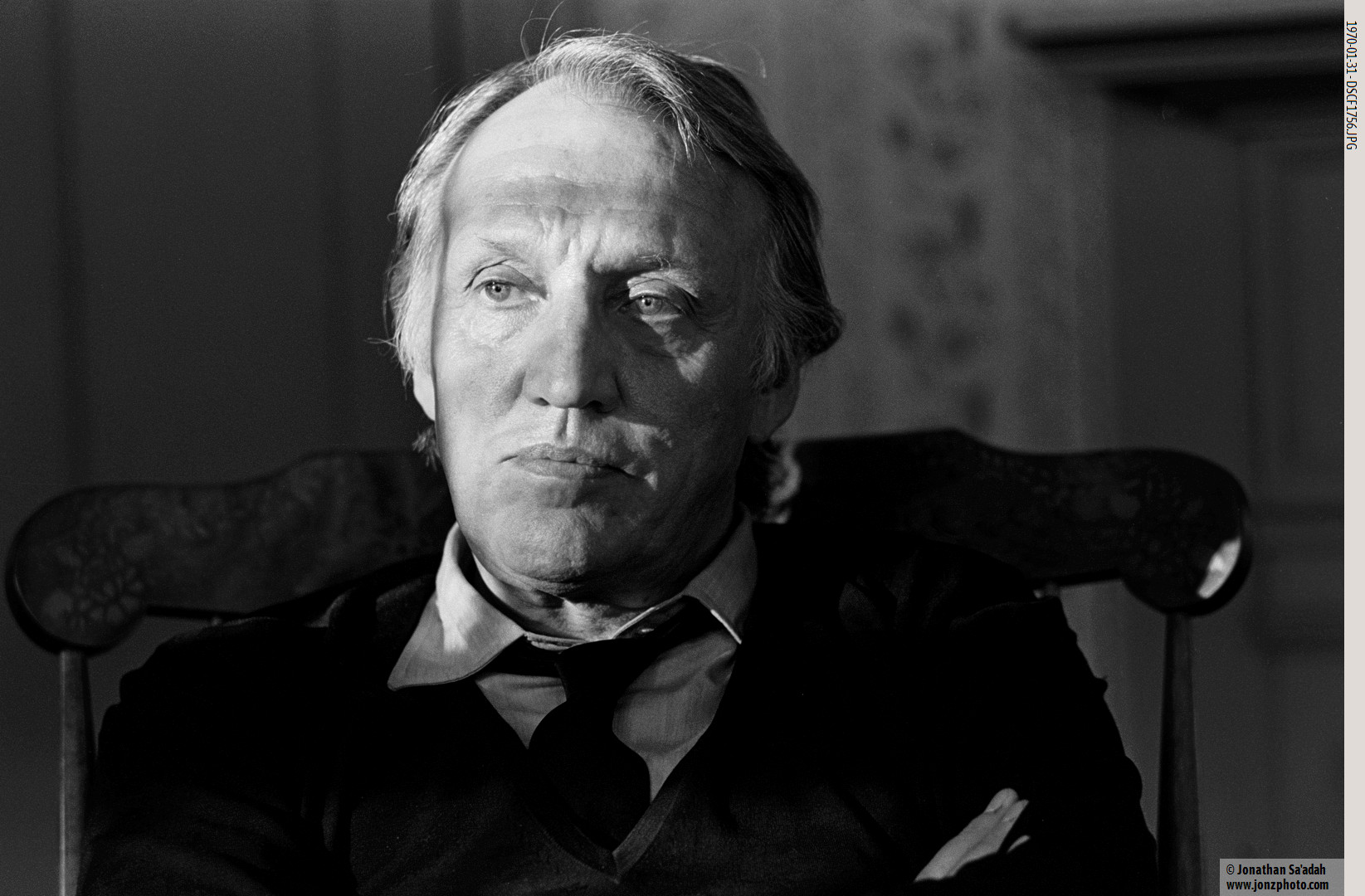
Part of a series on the making of the Losey film, M Klein (available on the Criterion Channel)
Joseph Losey in Hollywood
People often don’t fit into neat boxes. Joseph Losey defied easy classification. In the 1930s and 40s he was a young, breathtakingly handsome Hollywood director with an expanding stage and film reputation, known for his leftist politics and creative directing. He drove a pink Jaguar around town and had a highly public persona decorated with female movie stars and expensive tastes. He could be gracious in one moment and furious in the next, when his quizzical grin would turn hard steel. He could also be almost simultaneously thoughtful and thoughtless, the later often fueled by large amounts of alcohol.
Losey in forced exile and how this project started
Losey and many other people found their match in the vitriolic storm of McCarthyism that swept into United States in the late 1940s, because of which he was forced into personal and professional exile in England.
I met him on his first trip back to the United States in 1970. He had been hired as a “Visiting Professor” at Dartmouth College, where he picked me out of a class as a creative photographer. He returned to England after that term but we stayed in touch by letter. Five years later I received a fellowship to spend a year taking pictures in Beirut, and in late summer 1975, faced with the beginning of the Lebanese civil war, I was searching for another project to focus on. Losey suggested that I meet him in Paris where he’d give me access to photograph the making of his next film, to be shot both in a studio and on locations around the city. He wrote a convincing letter to the fellowship committee about how I should be allowed to change from low-cost Beirut to expensive Paris, and in due course I started taking pictures of him making the film M Klein in early October of 1975.
M Klein and French attitudes towards the Jews during WWII
I was lucky in that this film ended up being one of Losey’s enduring works. It was a disappointing failure commercially but it ranks as one of his most respected films. It also had the added dimension of bringing to light an unpopular topic in postwar French society: French racism and complicity in the Nazi extermination of the Jews and other ethnic minorities.
Losey wasn’t the first to deal with this subject. Marcel Ophul’s 1969 documentary The Sorrow and the Pity pre-dated M Klein by six years, and Louis Malle’s Lacombe, Lucien was released in the same period as Losey’s film, but Losey’s film was also high visibility and went into distribution in France, helped along by the popularity of the lead (Alain Delon). Even though the film wasn’t popular it increased the pressure and helped penetrate the French wall of resistance to even talking about what had happened during the war.
On the production side, both the Casting Director, Margot Capelier, and the Art Director, Alexandre Trauner, were Jews living in Paris at the start of the war (Capelier born there, and Trauner an immigrant) who had been forced to flee to southern France to escape the Nazi occupation, and the centrality of the Jewish persecution in the screenplay attracted them to the project. Capelier had lost members of her family. The film was typical of Losey’s best films: embracing large themes and weaving them into a cautionary tale with present-day relevance.
What made M Klein unusual
M Klein was the twenty-eighth feature length film directed by Losey, but his first in French. It tells the story of Robert Klein, a privileged but shady French art dealer who, through wartime suspicion and his own subsequent actions, becomes trapped in a web of bureaucratic confusion, ultimately coming face to face with the persecution of Jews during the WWII Nazi occupation of France.

There are, in fact, two M Kleins: Robert, who believes he is “French and Catholic since Louis XIV” and another who is a Jew fighting for the Resistance. The Catholic Klein, smoothly played by Alain Delon, is drawn like a moth to the Jewish Klein. Delon is joined by a standout cast including a caustically dour Jeanne Moreau, a two-faced French lawyer played by Michael Lonsdale, Suzanne Flon who gives a nuanced portrayal of the Jewish Klein’s concierge, and a laconically skillful performance by an elderly Louis Seigner in one of his final roles, as Klein’s father.
Most films contain a disclaimer that they are fictional. M Klein flips convention around, stating right at the beginning that what is shown is based on a composite of true stories from 1942 France.
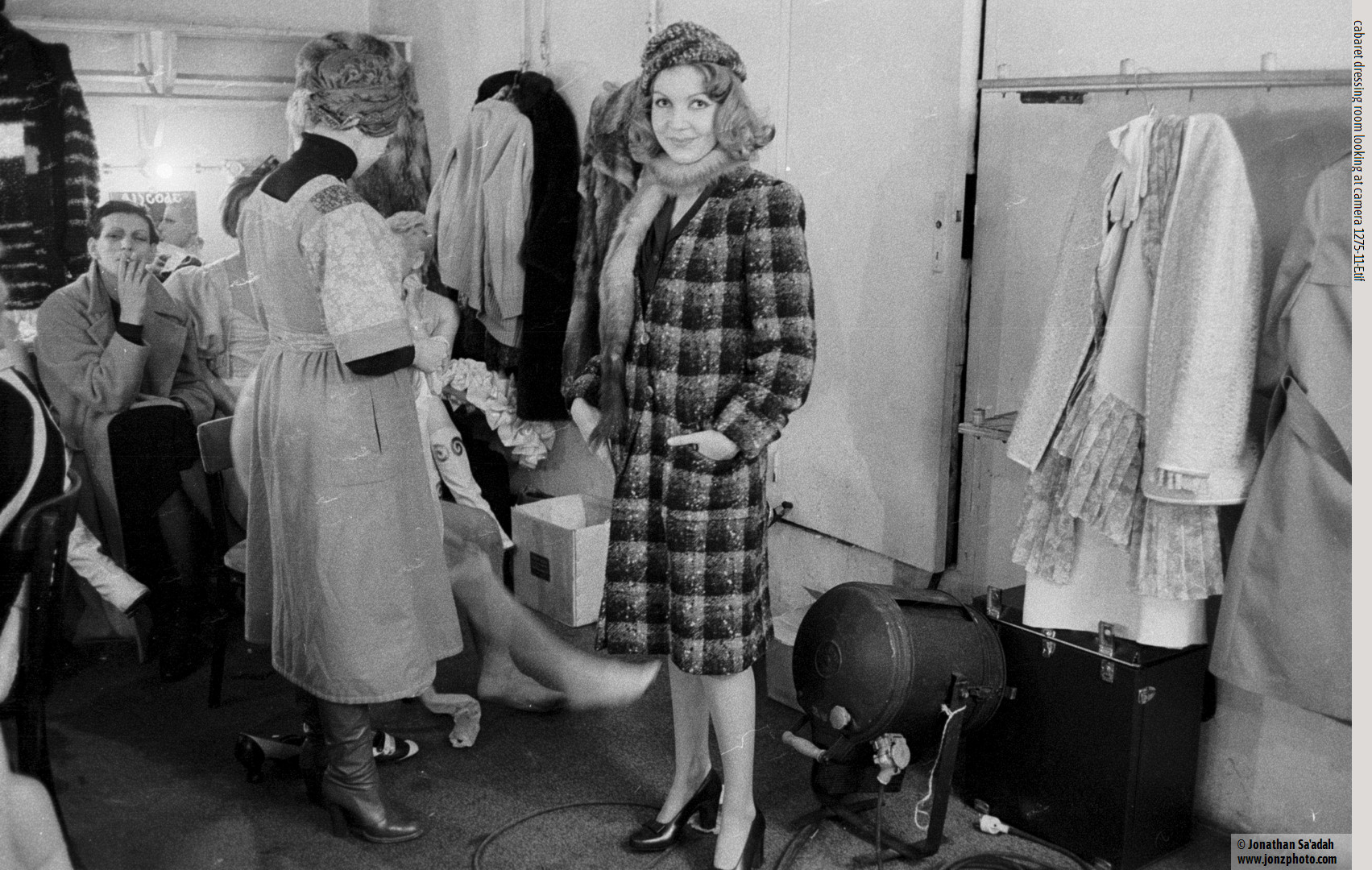
In filming this story, Losey has several themes, and all of them center around questioning racism. One is that he highlights the transient nature of human identity. Who are we, how do we define ourselves, and how do others define us? Robert Klein is a comfortable, refined French Catholic minding his own business during the war period. However, when he is mistakenly identified as a Jew, his world is turned upside down. In delving into his past he is forced to confront the fact that his identity is not as fixed as he was brought up to believe – that there are shades of grey that are easy to exploit in a fascist environment.
The film also deals with the question of societal and personal guilt in racism. Robert Klein is not a Nazi sympathizer, but on the other hand he doesn’t much care (or think) about what is happening. He is a man who, like many others, is content to go about his business and ignore the suffering of others. The end of the film makes it so he has to confront his own complicity in the racism that he had ignored before.
Finally, there are themes of memory and history in constructing narratives of racism. As Robert Klein delves deeper into the mystery of his mistaken identity, he begins to uncover a web of lies and deception that have been woven around him since childhood by his family. He realizes that the past is not always what it seems, and that truth can be elusive, and again can easily be used against a person.
M Klein is a thought-provoking film that explores some of the most complex and difficult themes of the 20th century. It is a film that challenges us as viewers to confront our own beliefs and assumptions about identity, guilt, and history. It’s not by accident that these themes attracted major actors and film professionals who were, like Joseph Losey, committed to social justice and truth, nor is it at all surprising that in view of its unpopular themes the film failed to find a favorable reception in France. What made the M Klein unusual was to have committed people working together on a theme that they knew would be unpopular, but still wanted to make it and advance the discussion of racism during the war.
Tags: French Cinema, History of Film, Joseph Losey, Profiles, Second World War

























































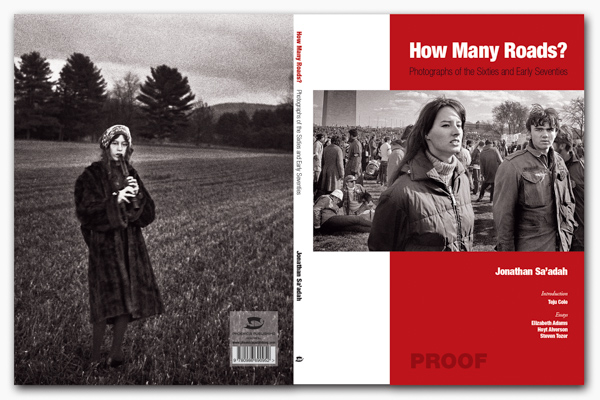
Recent Comments